Hey friend — if you love drama, texture, and bathrooms that actually make people pause, you came to the right place. Black powder room ideas grab attention and steal the spotlight in the best way. In my opinion, a black powder room tells a story: bold, confident, and oddly cozy. I’ve spent four years designing small bathrooms and powder rooms, and i prefer using black strategically because it hides flaws, emphasizes fixtures, and creates instant luxury. Curious how this works? Let’s start with the basics before we jump into the fun ideas.
What is a black powder room? (and why everyone searches for it)
A black powder room means using black or deep charcoal as the primary color scheme for a half bathroom or powder room. People often think of pitch-black caves, but that’s not what a well-designed powder room becomes. I like to call it controlled darkness — the space feels intimate, dramatic, and surprisingly welcoming when you get the lighting right.
Why do people search for black powder room ideas? Simple.
- They want drama without remodeling a whole bathroom.
- They want contrast that makes hardware and mirrors pop.
- They want low-maintenance surfaces that hide smudges and imperfections.

According to my experience, the black trend works especially well in small spaces because you can create a focal point without overwhelming the rest of the house. Ever wondered why boutique hotels go dark in their powder rooms? Because it reads like a tiny theater scene, and who doesn’t like a little theatricality when they wash their hands?
Why choose a black powder room? (benefits that actually matter)
I recommend a black powder room when you want high impact on a budget. Here’s why, straight up.
Bold visual impact. Black creates contrast and frames fixtures like art. A gold mirror or a sculptural faucet looks more expensive against a dark backdrop.
Perceived luxury. In my opinion, black signals sophistication. It reads as intentional and curated, not just trendy.
Camouflages minor issues. Chips, small stains, and unevenness hide better on dark finishes. That saves you stress and touch-up paint. I like to remind clients: not every surface needs to be pristine to look high-end.
Works with tiny layouts. Believe it or not, a well-lit black powder room can feel cozier, more intimate, and even larger when you use reflective surfaces smartly. Don’t you love a design that surprises you?
Key design elements for a black powder room (what people really ask about)
People ask me the same things over and over, so here’s my compact checklist. Use these as your planning cheat sheet.
Lighting matters more than you think
Bad lighting ruins a black scheme. I recommend layering three types of light.
- Ambient light for general illumination.
- Task light near the mirror for grooming.
- Accent light to highlight textures or artwork.
Tip: I prefer LED bulbs with a warm color temperature around 2700K to 3000K in powder rooms. Warm light balances black and makes skin tones look flattering.
Finish selection and materials
Choose materials that bounce or absorb light intentionally.
- Matte paint adds depth and hides imperfections.
- Satin or semi-gloss paint works near sinks for durability.
- Glossy tiles or mirror panels create visual dimension.
In my experience, mixing matte paint with a glossy tile splashback creates a luxe contrast without being too literal.
Fixtures and hardware
Black gives you permission to play with finishes. I recommend:
- Polished brass or brushed gold for warmth.
- Polished chrome for a modern edge.
- Matte black fixtures if you want a monochrome look.
Personal note: i prefer brass accents in small powder rooms. Brass warms up the space and stops the black from feeling cold.
Flooring and texture
Your floor anchors the room. Pick something that speaks to the style you want.
- Patterned tiles add personality and act as a visual break.
- Large-format dark tiles create a seamless, modern look.
- Natural stone brings texture but check maintenance needs.

Recommendation: For a small powder room, patterned encaustic-style tiles give you personality without overwhelming the design.
1. Black powder room with brass accents and a statement mirror
Want instant glamour without a full renovation? This is my go-to. Black walls make metal pop and a large brass mirror reads like jewelry on the wall.
Why it works
Black creates a dramatic backdrop so brass hardware looks richer and the mirror becomes the focal point. I recommend this when you want an upscale hotel vibe on a modest budget.

Quick tips
- Use matte black paint on walls to create depth.
- Pick a large round or oval brass mirror to soften the geometry.
- Install a wall sconce on each side of the mirror for flattering light.
- Add a small vase with a live plant for contrast.
Budget note: you can swap solid brass for brass-finish fixtures to keep costs down. In my opinion, the mirror and lighting are where you should spend the most attention.
2. Black powder room with patterned floor tiles
Why settle for plain when you can give the floor personality? Patterned tiles act like a rug and keep the black from feeling monotonous.
Why it works
Pattern draws the eye down and anchors the room. I prefer encaustic style tiles or geometric black and white patterns to add visual texture.
Quick tips
- Choose tiles with contrasting light tones so the pattern reads clearly.
- Keep wall finishes simple (solid black) so the floor stays the star.
- Use grout color that complements the tile pattern for a clean look.
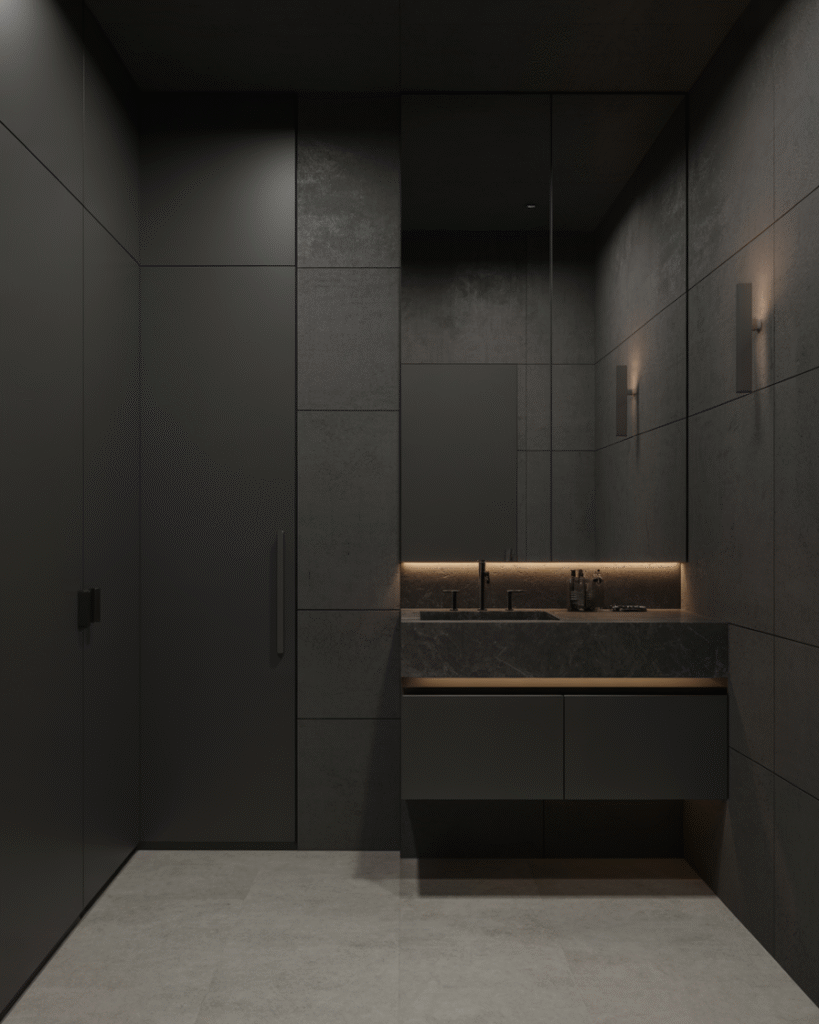
Practical tip: patterned tiles hide dirt and wear better than plain dark tiles. That makes them perfect for real life.
3. Black powder room with velvet wallpaper and warm lighting
Yes, velvet wallpaper exists in washable, practical versions. This idea feels dramatic and cozy, like stepping into a boutique club.
Why it works
Textured wallpaper creates depth and reflects light subtly. In my experience, the tactile quality of velvet-like finishes makes a small space feel luxe and inviting.

Quick tips
- Confirm the wallpaper is vinyl coated so you can wipe it down.
- Pair with warm LED lighting at 2700K to 3000K to keep skin tones flattering.
- Use soft brass or aged gold hardware to complement the warmth.
My take: this idea looks expensive but can be surprisingly affordable if you choose a quality printed vinyl paper.
4. Black powder room with marble and black grout
If you want classic with a twist, combine black walls with white marble surfaces and black grout or detailing.
Why it works
Marble balances the darkness with natural veins and light reflection. Black grout makes the look modern and cohesive rather than contrasting awkwardly.
Quick tips
- Use marble on a vanity top or as an accent wall.
- Choose natural stone or porcelain that copies marble for budget savings.
- Keep plumbing fixtures simple and polished so the stone remains the center.
Design note: I recommend using marble sparingly in a powder room. A little goes a long way in conveying luxury.
5. Monochrome black powder room with texture layering
Going all black? Do it right. I recommend focusing on texture rather than more color. Think matte paint, glossy tile, woven textiles, and sculptural fixtures.
Why it works
Texture prevents a monochrome scheme from looking flat. When everything stays within the black family, surfaces and materials create the interest.
Quick tips
- Mix finishes: matte on walls, glossy tile splash, fabric hand towel, and a wooden stool for warmth.
- Introduce reflective elements such as chrome or mirror to catch light.
- Keep decor minimal so textures do the storytelling.
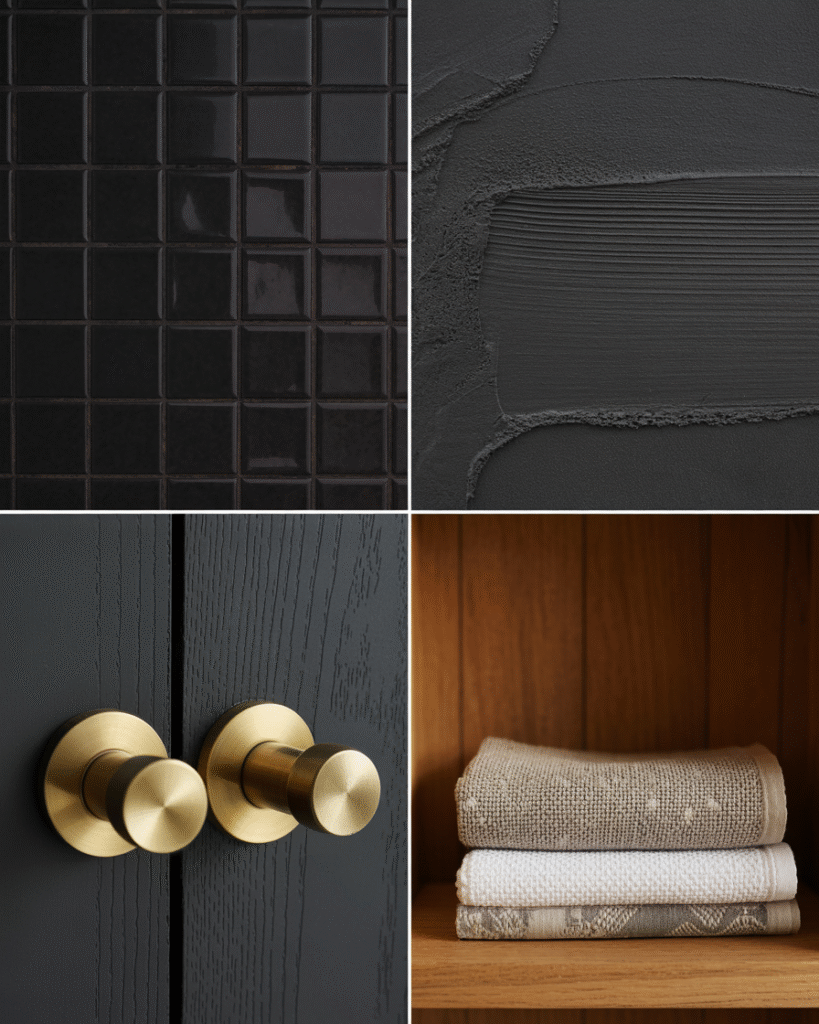
Personal note: i like this approach for minimalist homes. It reads confident and intentionally curated.
6. Black powder room with bold wallpaper mural
Want to make a statement in a tiny space? A wallpaper mural on one wall transforms the powder room into an artful vignette.
Why it works
A mural gives you a focal story and lets you keep other elements simple. I prefer botanical or abstract murals with hints of gold or pale tones that read well against black.
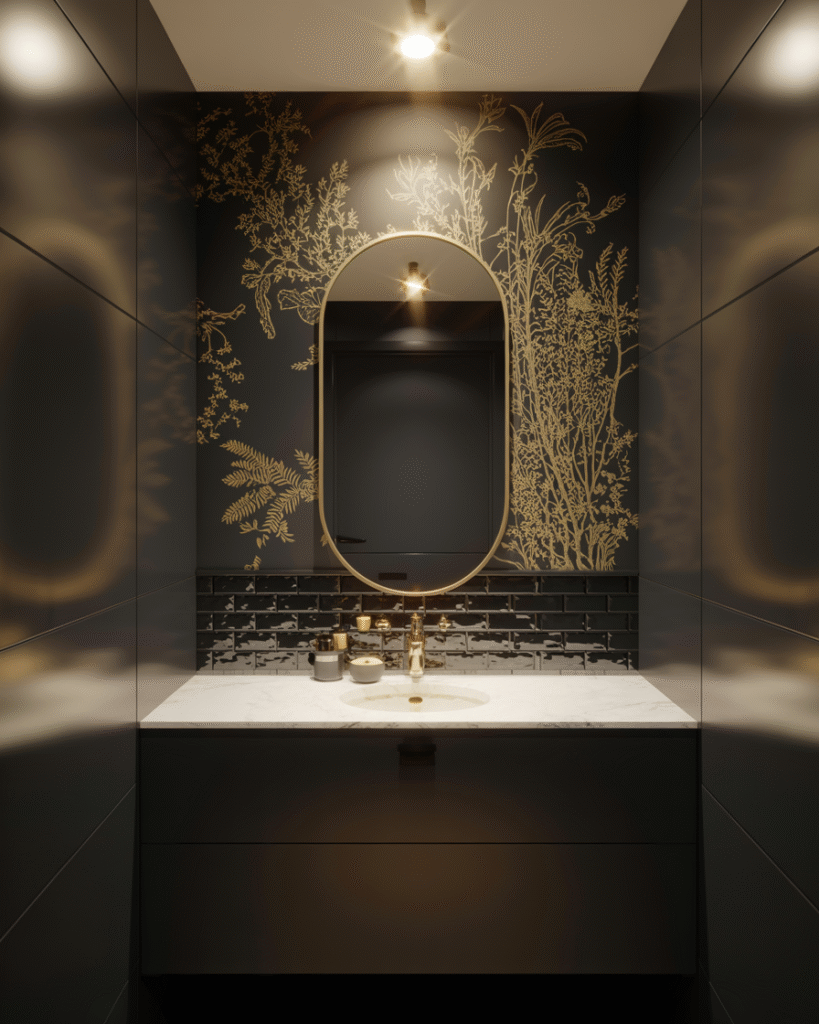
Quick tips
- Keep the mural wall opposite the door if possible so guests see it immediately.
- Match accents to colors from the mural to create cohesion.
- Use moisture-resistant mural vinyl for longevity.
Practical take: murals feel dramatic but require fewer changes than full tiling or stone work.
7. Black powder room with high contrast sink and countertop
Contrast can be a designer’s best friend. Try a white or light stone sink and countertop against black walls for a crisp, modern punch.
Why it works
The eye loves contrast. A light sink becomes a sculptural object against dark surroundings. I recommend this when you want a modern clean aesthetic with low visual clutter.
Quick tips
- Choose a vessel sink for sculptural drama or an undermount for seamless lines.
- Keep faucet finish consistent with other hardware to avoid visual noise.
- Add a small shelf in a natural material like walnut for warmth and storage.
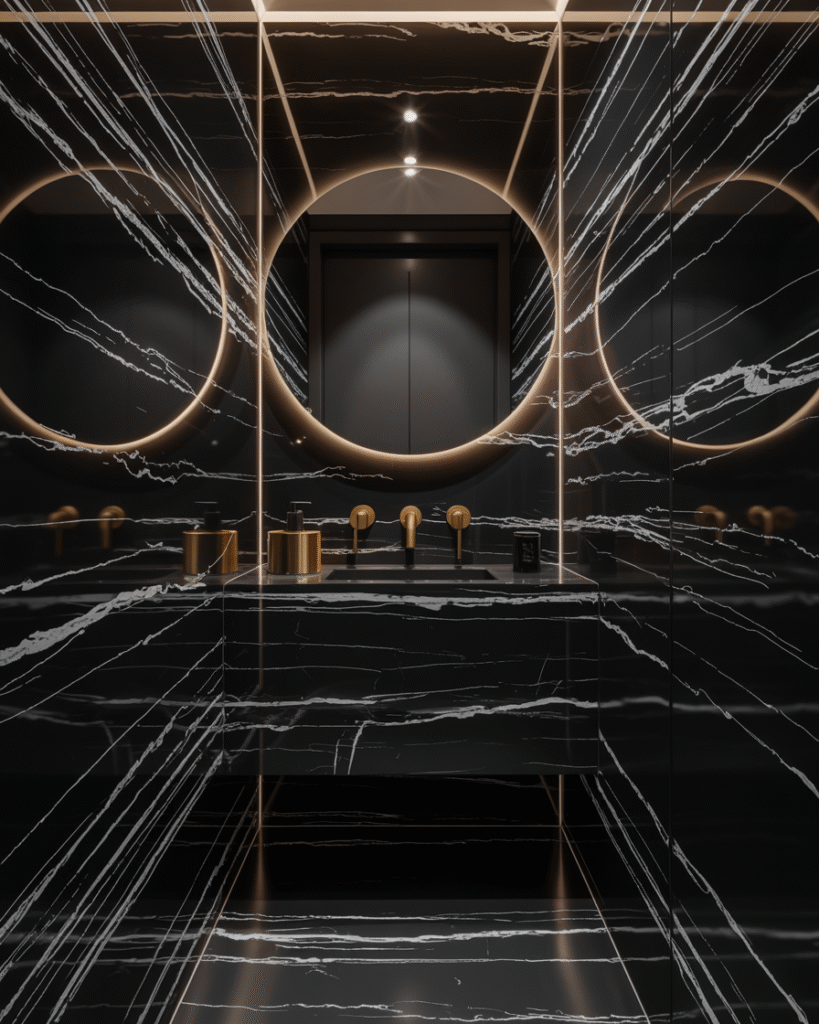
Installation tip: make sure the plumbing and sink edges get proper sealing. Dark walls show water drips more than you think.
8. Black powder room with a sculptural sink and statement faucet
Want the sink to do all the talking? I love using a dramatic sink as the room’s centerpiece. A white stone vessel sink or a sculptural black basin set against a matte black wall looks wildly modern.
Why it works
The sink becomes a piece of functional art. Contrast between a light stone sink and black walls creates that museum-quality moment, and the faucet reads like sculpture.
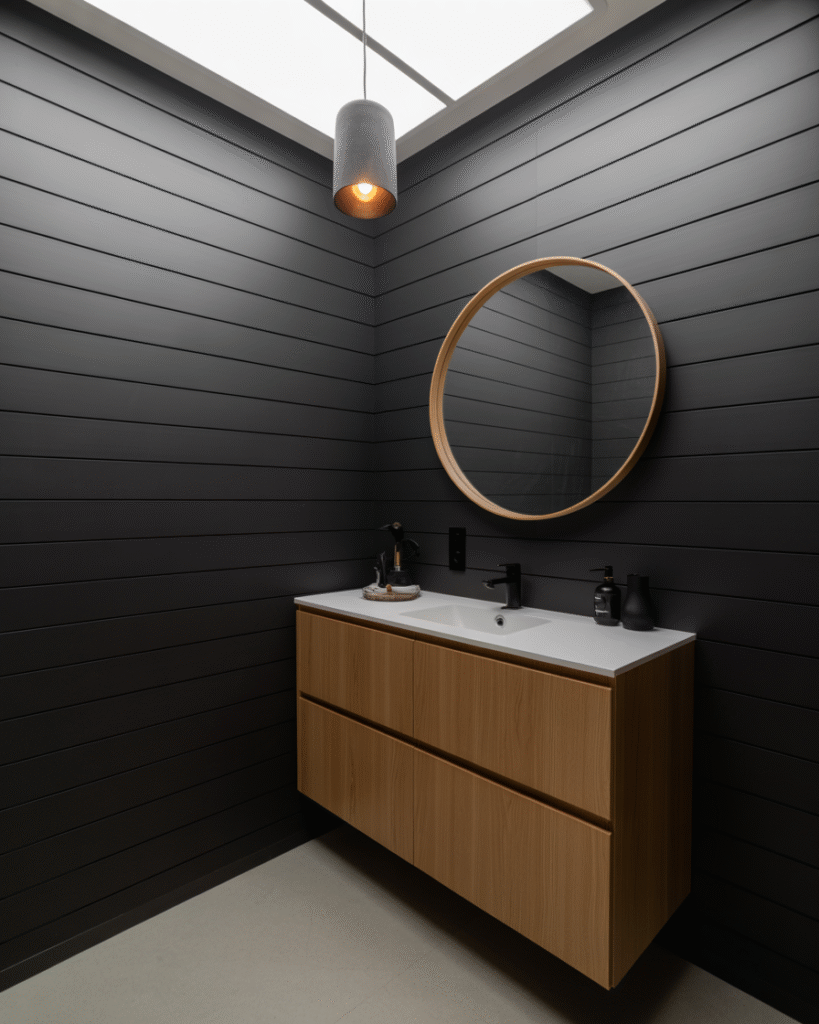
Quick tips
- Choose a tall, wall-mounted or single-hole faucet so the sink silhouette stays clean.
- Use an undermounted LED strip beneath the vanity for subtle glow.
- Keep countertop clutter minimal — one soap pump, one small tray.
Personal note: i prefer vessel sinks carved from quartz or a solid surface for durability. They look high-end and hold up to real use.
9. Black powder room with a gallery wall of mirrors and art
If you want drama with personality, go eclectic. Mix different mirror shapes, a framed print or two, and a small shelf. The black backdrop acts like a frame for everything.
Why it works
A gallery wall gives a curated, collected-over-time vibe. Mirrors multiply light and make the room feel layered rather than flat.
Quick tips
- Use a variety of mirror styles: one large anchor mirror plus 2–3 smaller ones.
- Keep frames within a limited finish palette (say brass + black) for cohesion.
- Add one moisture-resistant framed print for interest.
My take: i like this approach when clients want personality without huge expense. It reads bespoke but stays flexible.
10. Black powder room with natural accents and biophilic touches
Black and green? Yes please. Pair deep black with rich wood tones, stone, and a living plant to soften the drama and add life.

Why it works
Natural accents warm the black and create a balanced, grounded space. A little green goes a long way — even a single potted fern makes the room feel calm and considered.
Quick tips
- Choose walnut or teak shelves for warmth.
- Add a small hanging plant or a single shelf with a trailing plant.
- Use matte black fixtures with a wood or stone countertop to blend textures.
In my experience, homeowners appreciate this as it makes a bold scheme feel welcoming, not intimidating.
Quick shopping list — grab these for a polished black powder room
Below I give compact shopping lists depending on style. Use these as starting points — you’ll tweak sizes and finishes to your space. Bold the must-haves to avoid analysis paralysis.
Essentials (for every black powder room)
- Matte black paint (or charcoal if you want a softer look)
- Vanity (floating or wall-hung works best in small rooms)
- Mirror (one large or a curated gallery)
- Vanity lighting (sconces or vertical fixtures)
- Toilet (compact, wall-hung if possible)
- Floor tile (patterned or large-format dark tile)
- Exhaust fan (quiet model, vented outside)
- Hardware (faucet, towel ring, toilet paper holder — choose one finish)
Luxe finish shopping list
- Solid surface or quartz countertop
- Polished brass or aged brass hardware
- Marble or marble-look porcelain backsplash
- Decorative wall sconce pair
- High-CRI LED bulbs (90+ CRI)
Budget-friendly shopping list
- Porcelain vanity top or prefinished vanity unit
- Brass-finish hardware (cost-effective)
- Vinyl wallpaper with velvet-look print
- Patterned porcelain tiles that mimic encaustic
Materials I personally recommend
- Paint: Benjamin Moore’s Scuttle Black or Farrow & Ball’s Down Pipe (if you want depth). I prefer testers first.
- Tiles: Look for matte porcelain or encaustic-style patterns for floors.
- Fixtures: I like a polished brass faucet for warmth; get a matching pop-up waste.
- Mirror: One large round mirror with thin brass trim for a timeless look.
Lighting diagram (text-only, easy to hand to an electrician)
You don’t need a drawing to get lighting right — just follow this simple plan. Use the measurements in your checklist to position fixtures.
Small powder room (typical 5’ x 3.5’)
- Ceiling: one centered recessed downlight (50% brightness of vanity lights) or one small semi-flush fixture centered. Mount at ceiling center.
- Vanity lighting: two vertical sconces mounted 60–66 inches from the floor, one on each side of the mirror. If you use a single wall mount above mirror, choose a long horizontal fixture that eliminates shadows.
- Accent: LED tape under floating vanity running full width, 120V driver in vanity cavity. Dimming circuit recommended.
Medium powder room (6’ x 5’)
- Ceiling: two recessed cans aligned with room length or a small central fixture.
- Vanity: pair of sconces or vertical LED bars mounted at eye level (60–66 in). Use 3000K warm LEDs.
- Accent: mini directional spot or picture light for artwork; mount to highlight feature wall.
Technical bullet points for the electrician
- Use 2700K–3000K color temperature for warmth.
- Use dimmable LED drivers and dimmers rated for LED loads.
- Keep vanity light circuit separate if you’ll use night lighting (LED strip) on a lower wattage/dimmer setting.
- Install an exhaust fan rated for the space (CFM roughly equals room floor area; for small powder room 50–80 CFM typically suffices).
Quick budgets — realistic ranges based on my projects
I keep budgets tight in initial talks because you need clarity. These are ballpark ranges I use when advising clients. Prices vary by region and brand, but this gives you a baseline.

Budget build: $800 — $2,000
- What you get: Paint, budget vanity, basic faucet, patterned budget tile, standard mirror, simple lighting, and basic toilet.
- Why choose this: You get the look without splurging on materials. I recommend focusing money on lighting and mirror even at this level.
Mid-range build: $2,000 — $6,000
- What you get: Quality vanity and countertop, branded faucet (brass or chrome), patterned encaustic-style tile floor, better lighting, decorative mirror, and higher-quality paint/wallpaper.
- Why choose this: This is where the design reads intentional. You get durability and visual impact.
Luxe build: $6,000 — $15,000+
- What you get: Stone countertop, custom vanity, high-end fixtures, full-height tile or marble accents, designer wallpaper, custom mirror, and integrated lighting controls.
- Why choose this: You get a boutique-hotel level finish and custom details that last.
Personal tip: i recommend spending on lighting and mirror before splurging on fascinating tiles. Good lighting makes cheaper materials read richer.
Short contractor checklist (concise, non-redundant — different from the printable doc)
Hand this to your contractor and say, “Do this, please.” It focuses on scope, sequence, and critical decisions.
- Confirm layout and measurements: finalize door swing, clearances, vanity size, and mirror center.
- Electrical plan: specify dimmable circuits for vanity and accent lights; install spaced outlets per code. Confirm exhaust fan location and CFM.
- Plumbing plan: confirm sink type (vessel vs undermount) and faucet rough-in requirements; verify wall hydrant height.
- Wall finishes: paint type and sheen, or specify vinyl wallpaper vendor & installation method.
- Flooring: confirm tile pattern layout (centered vs offset) and grout color. Ask for a mock-up of one tile run visible when entering.
- Mirror install: confirm fixing method and backing; if wall-hung, ensure blocking behind drywall.
- Final fixtures: match finish codes for all hardware and fittings to avoid mismatched metals.
- Acceptance test: verify lighting dimming works, water drains cleanly, fan vents outside, and mirror/shelf secure.
I always add: ask the contractor to take photos at each critical stage — rough-in, pre-tile, and pre-final — so you avoid surprises.
Small maintenance & care cheat-sheet (because life happens)
- Wipe matte black walls lightly with a microfiber cloth and mild soap if needed — avoid abrasive scrubbers.
- Use a squeegee on glossy tiles or mirrors to reduce water spots.
- Polished brass benefits from occasional gentle polishing; brass-finish (plated) hardware cleans with a damp cloth.
- Ventilate after showers (even in powder rooms if you have humidity) to protect finishes.
Final quick recap and call to action
You made it. Here’s the short version you can save or text to a friend: Black powder room schemes work because they create drama, make fixtures sing, and hide real-life scuffs. My favorite move? Pair black walls with warm brass and layered lighting — I use that combo again and again because it simply wins.
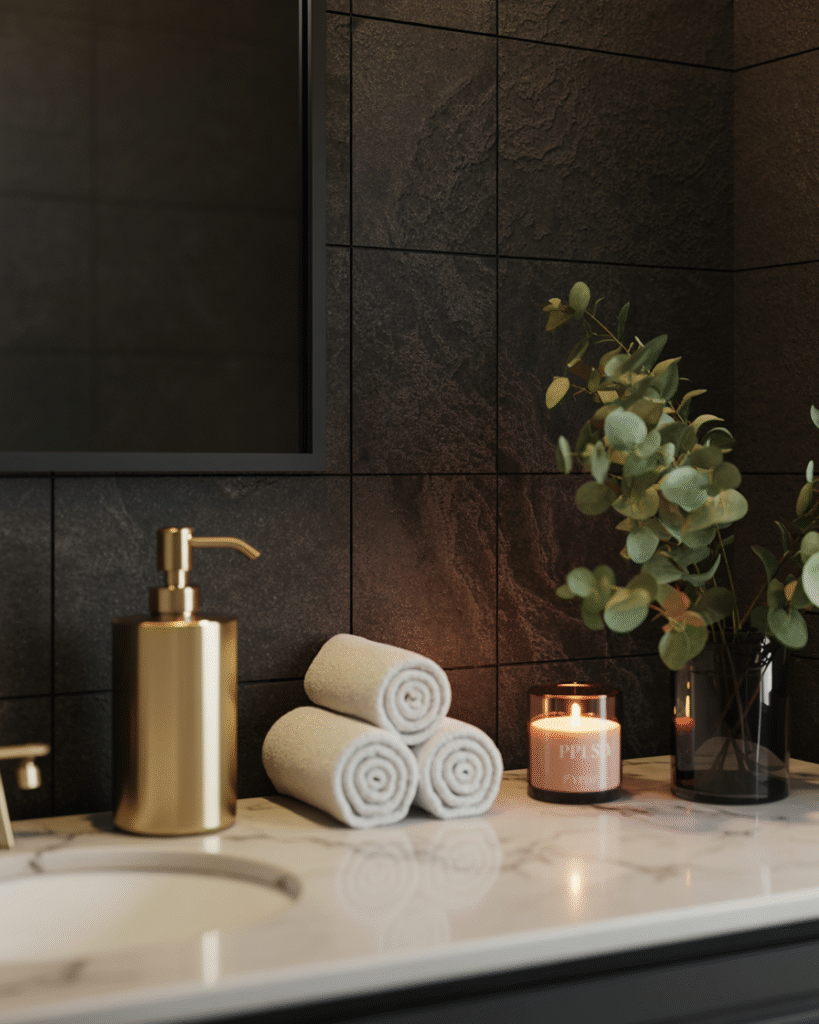
So what’s next? Pick one of the ideas above and choose one focal piece (mirror, sink, or tile). Spend on lighting and hang onto the rest for styling. Want me to draft a shopping list with exact product links or a scale drawing for your space? Say “yes” and give me the room dimensions — I’ll create a no-nonsense plan you can hand to a contractor.
Which idea are you leaning toward?




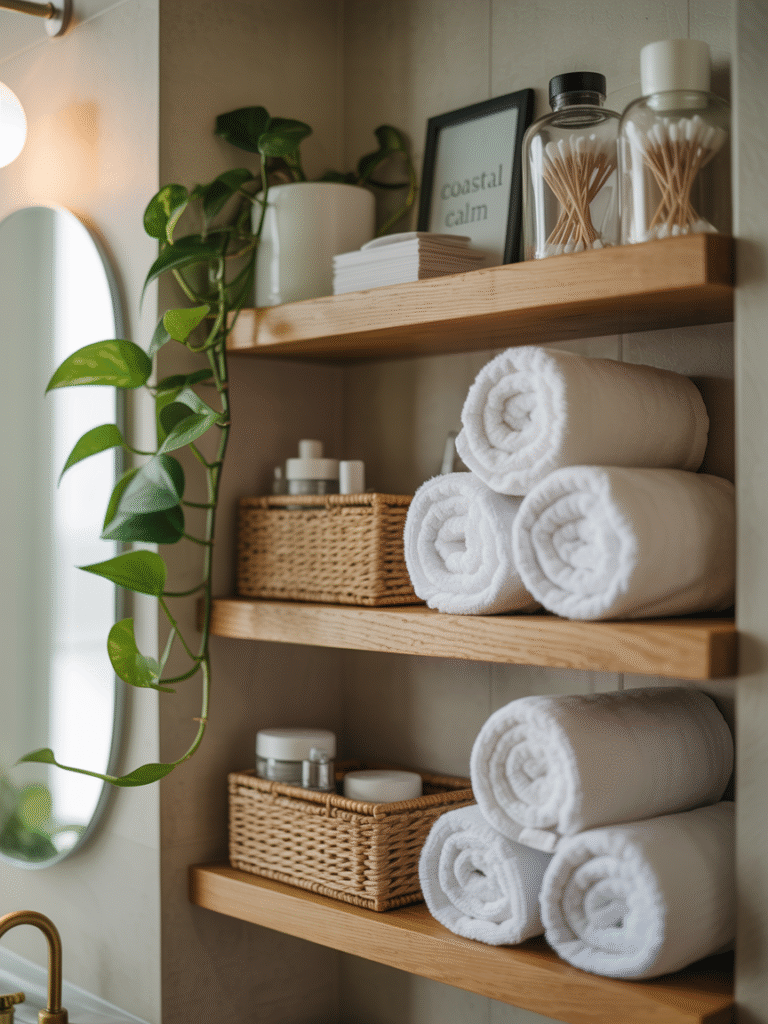

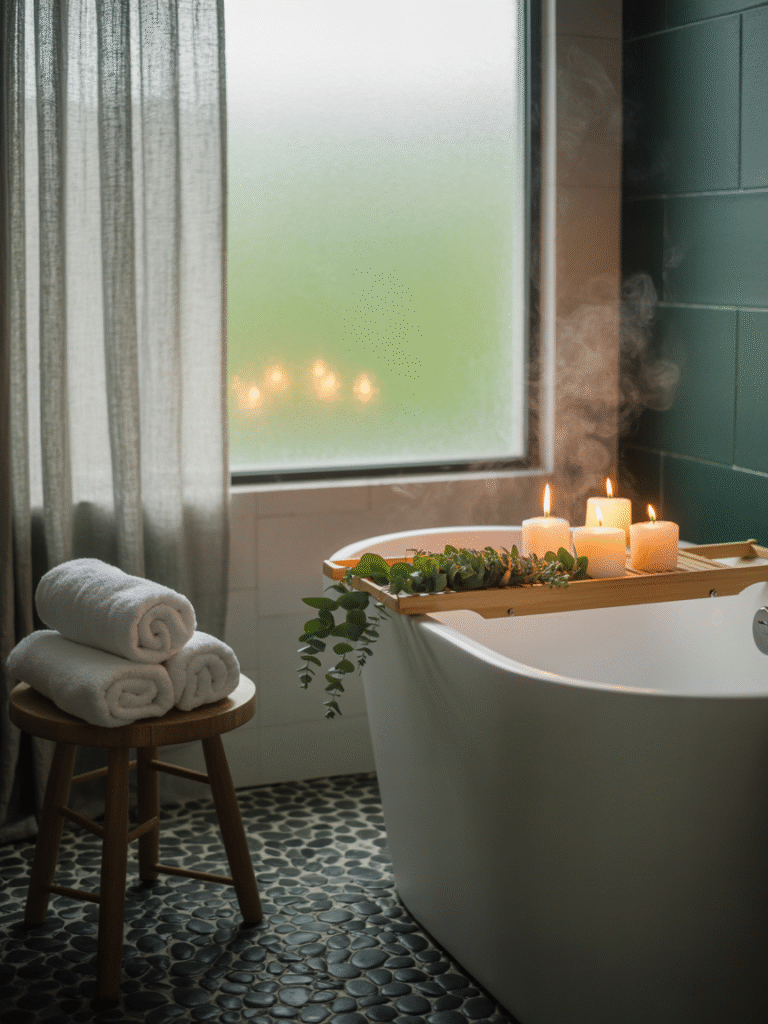
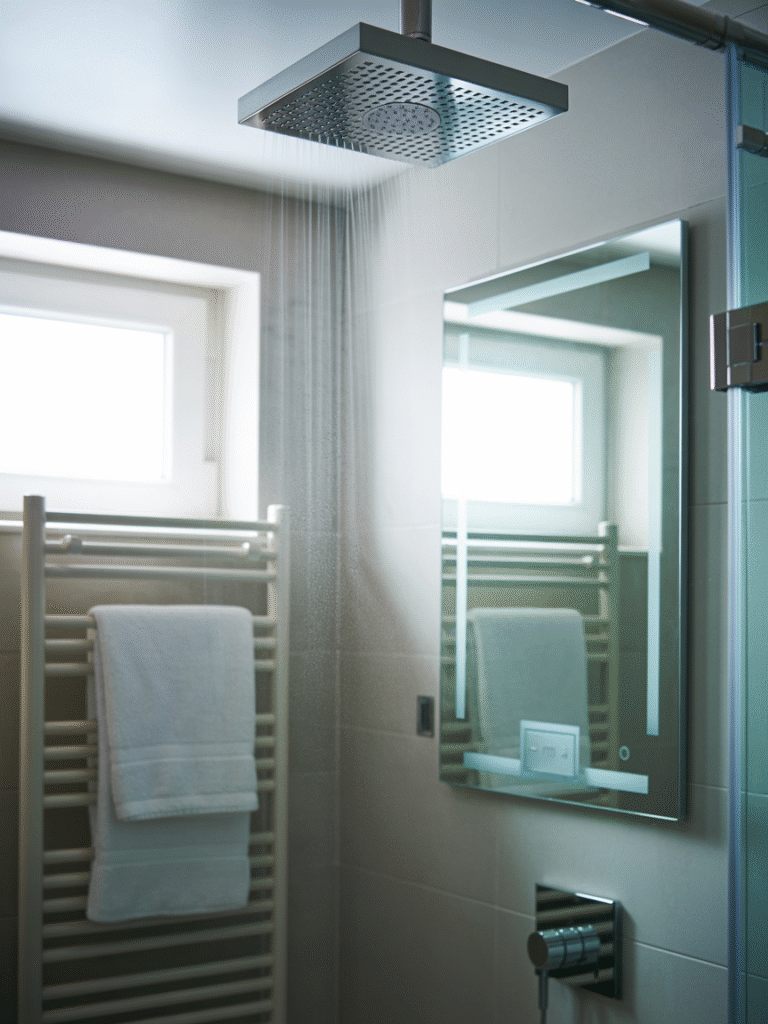



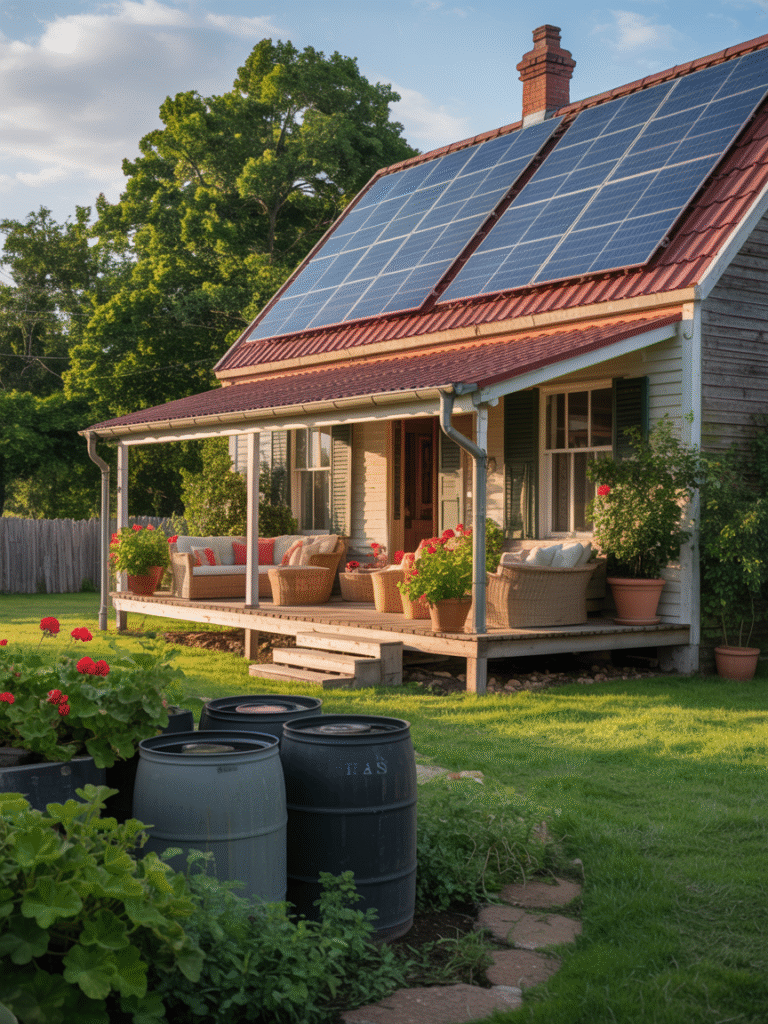

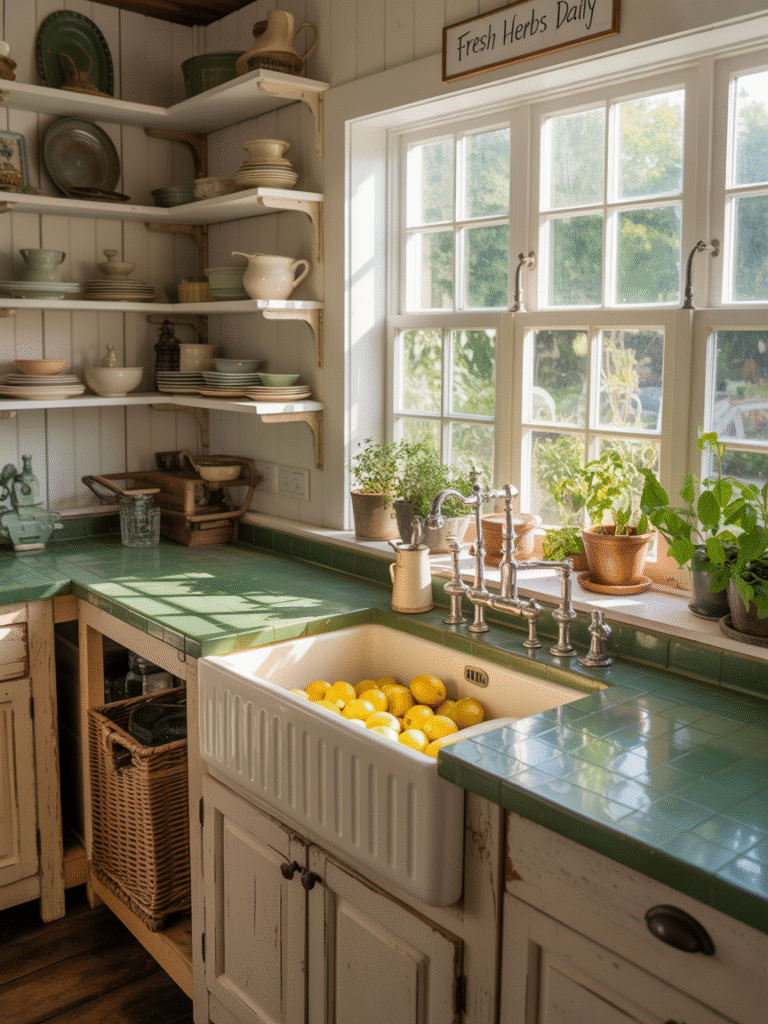

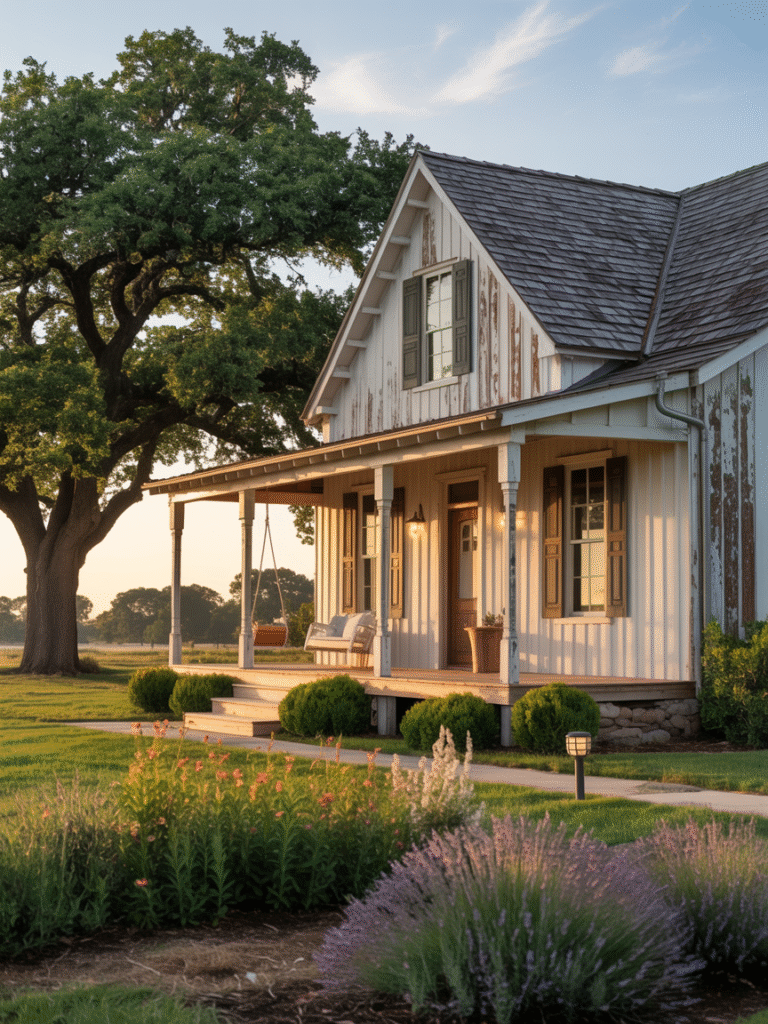
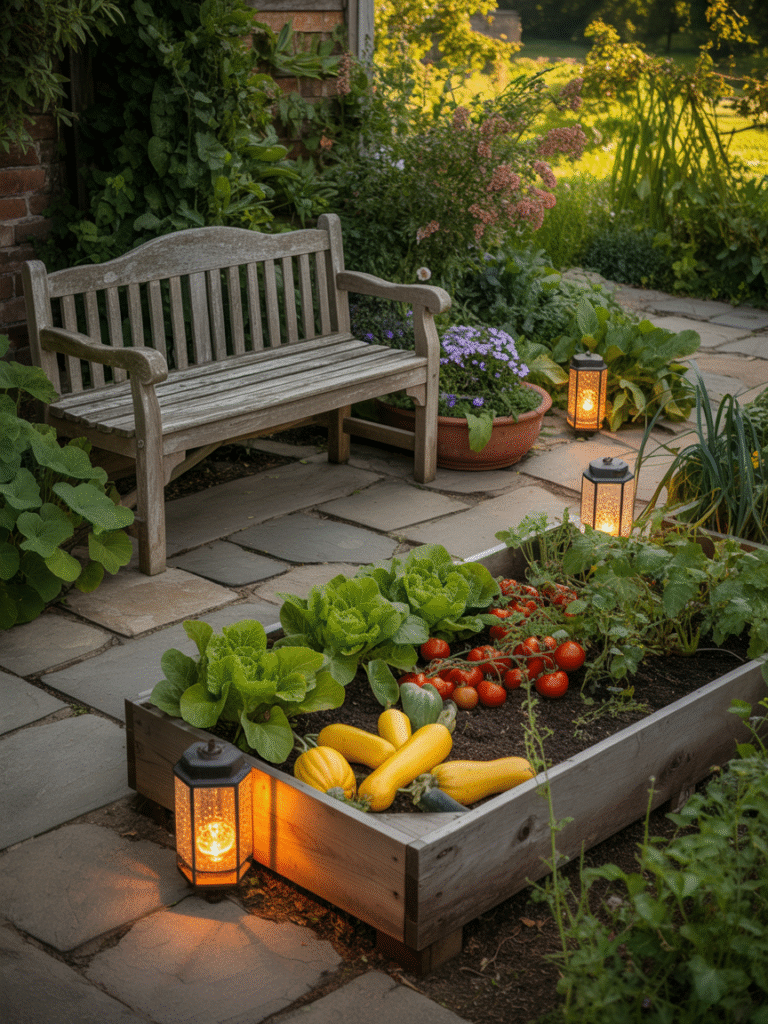
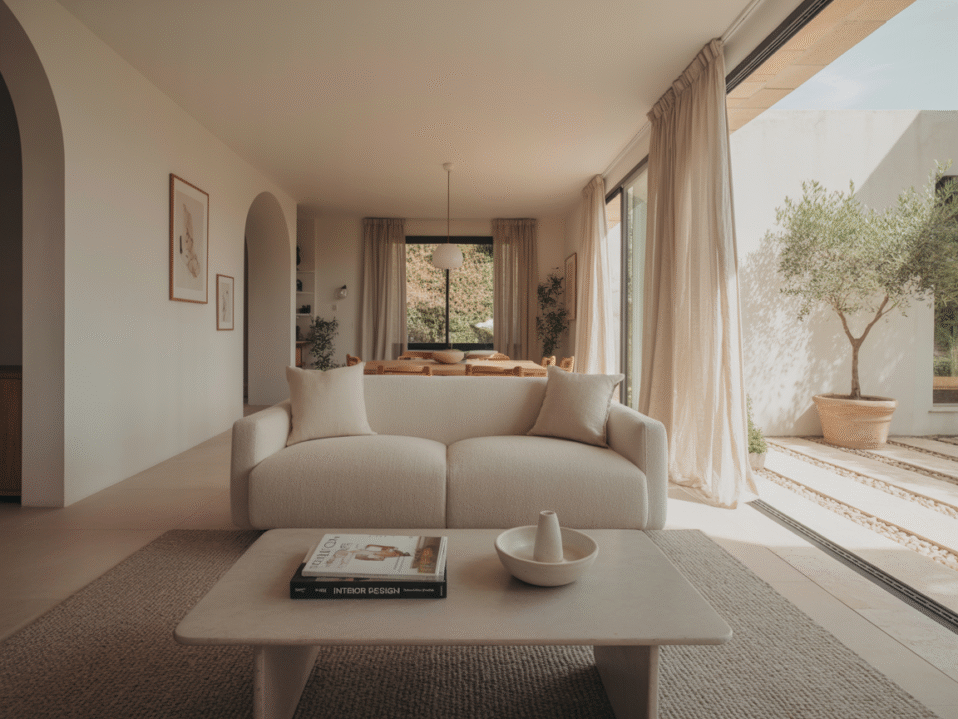


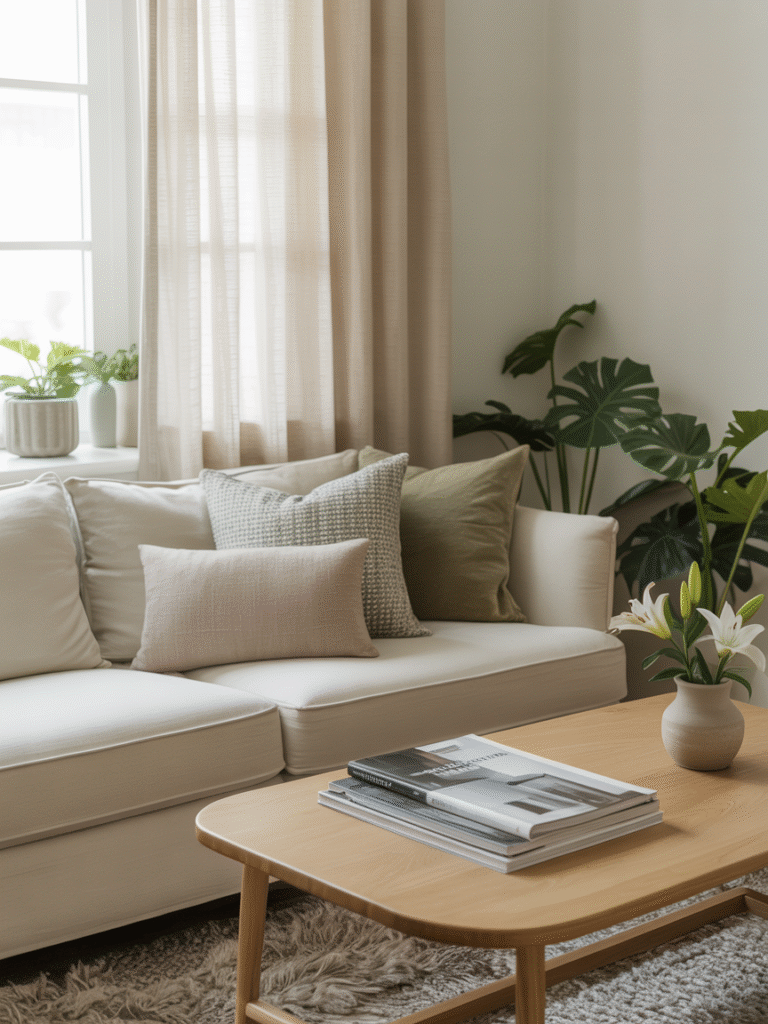



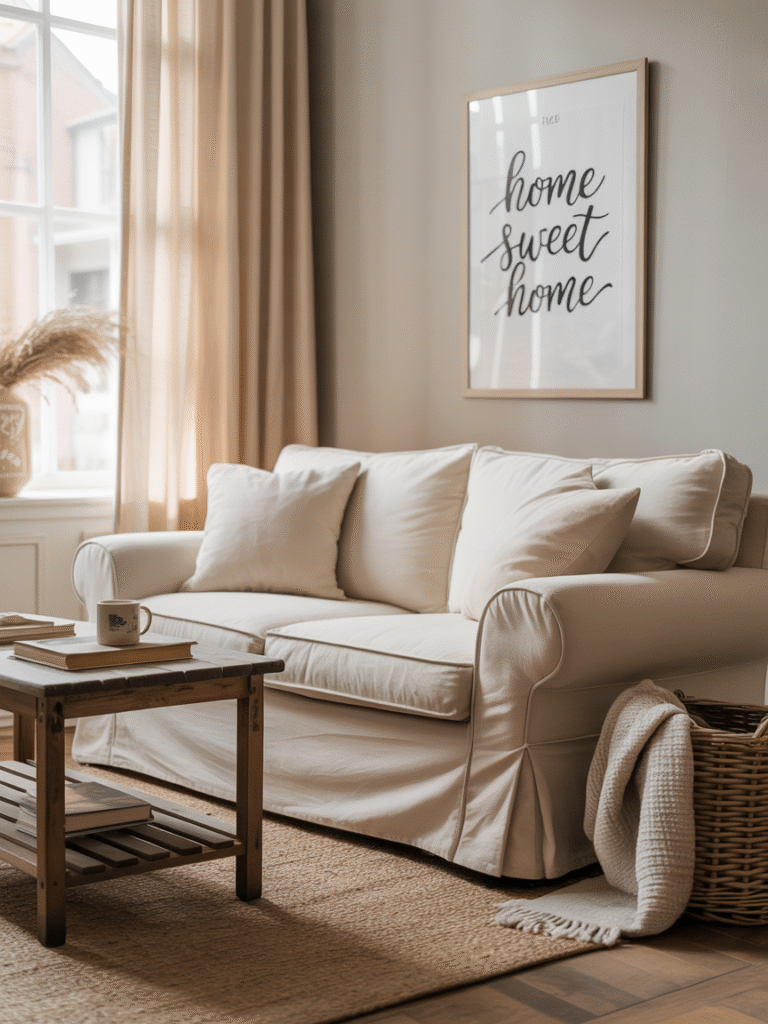
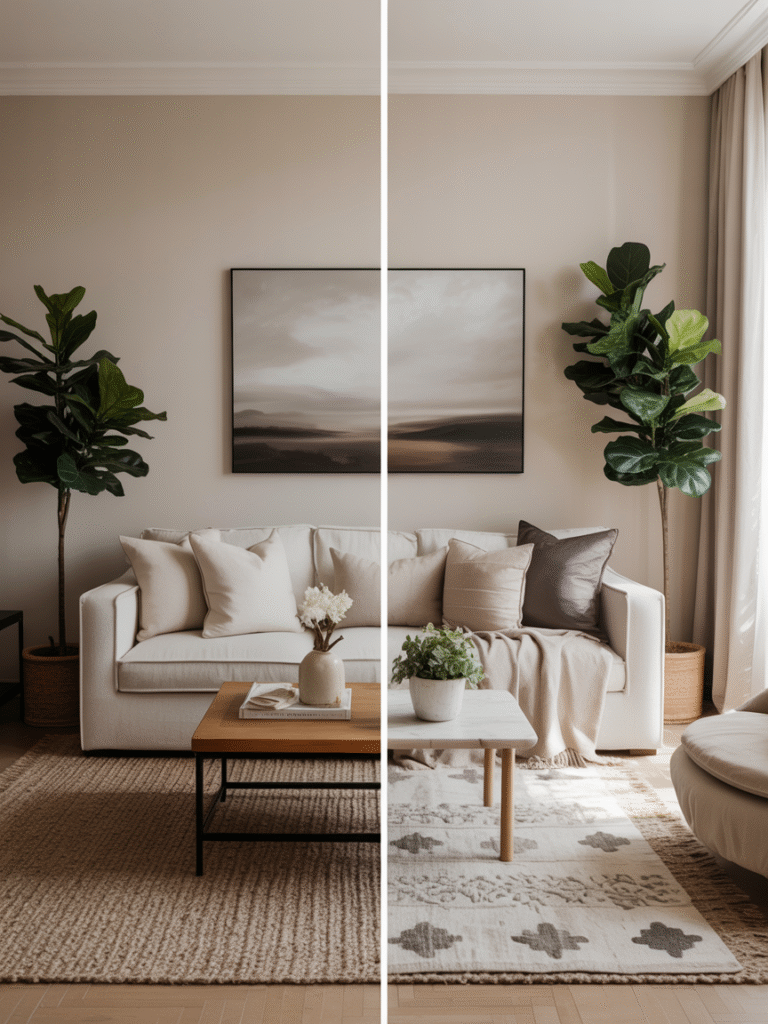

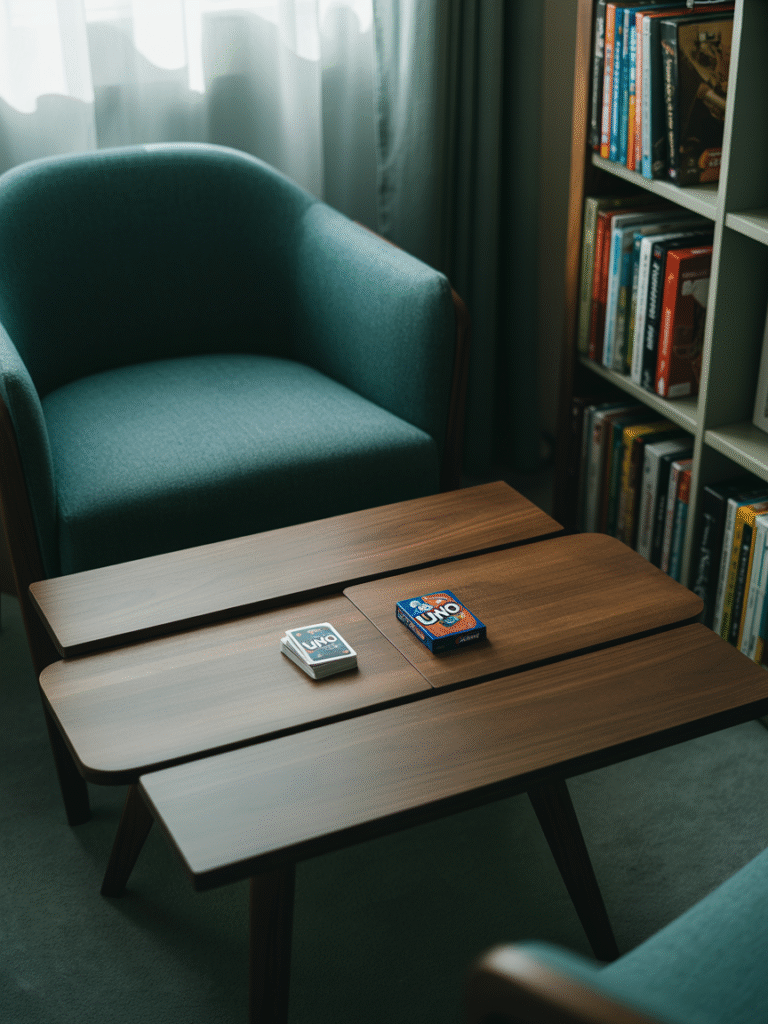
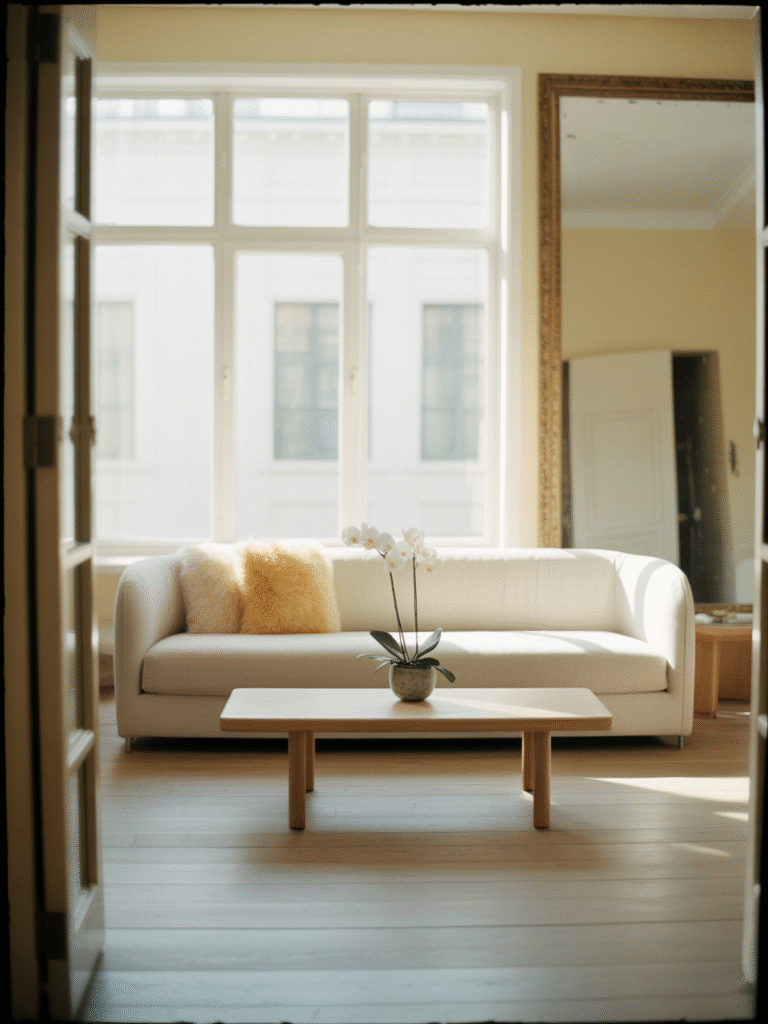

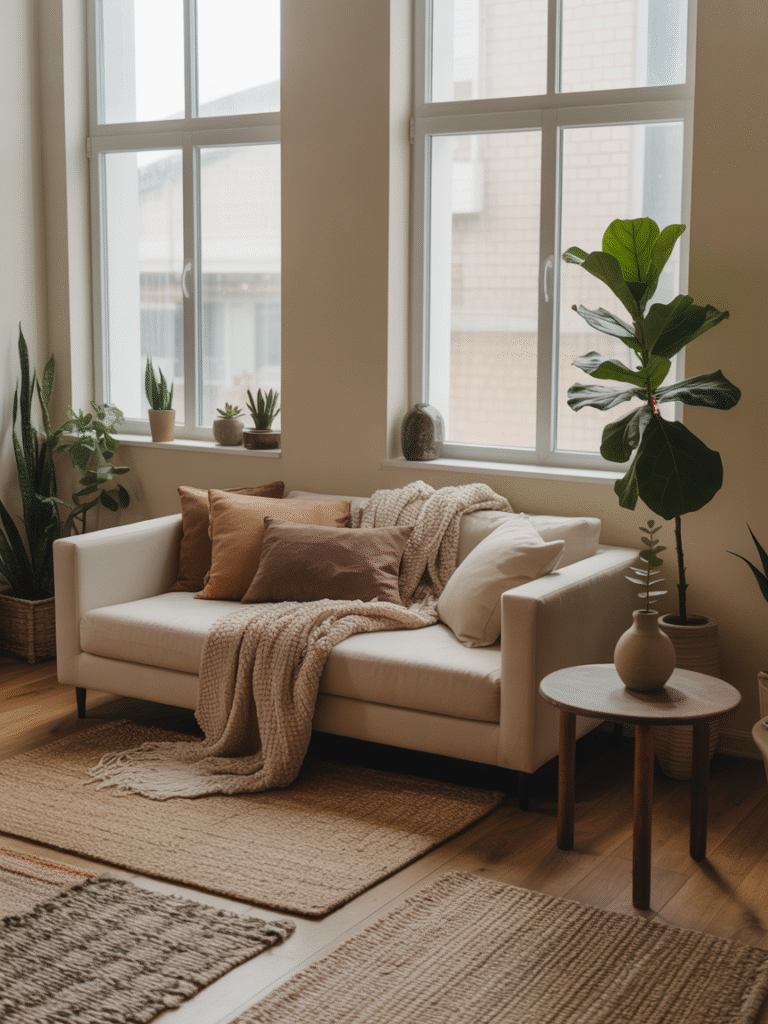

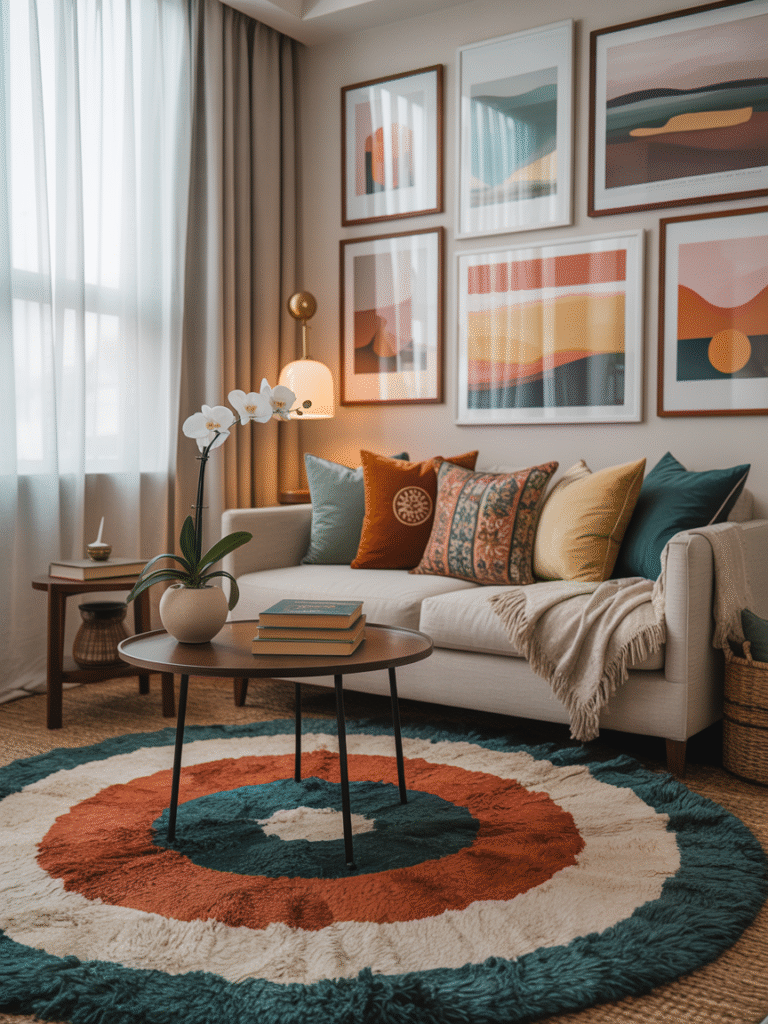
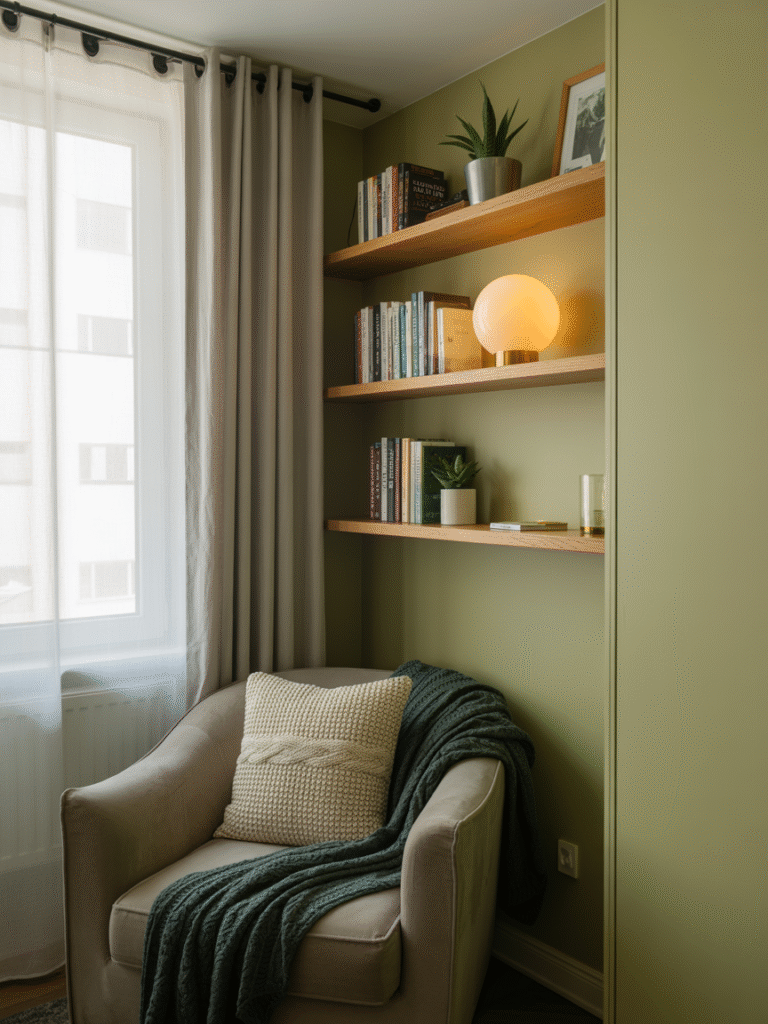

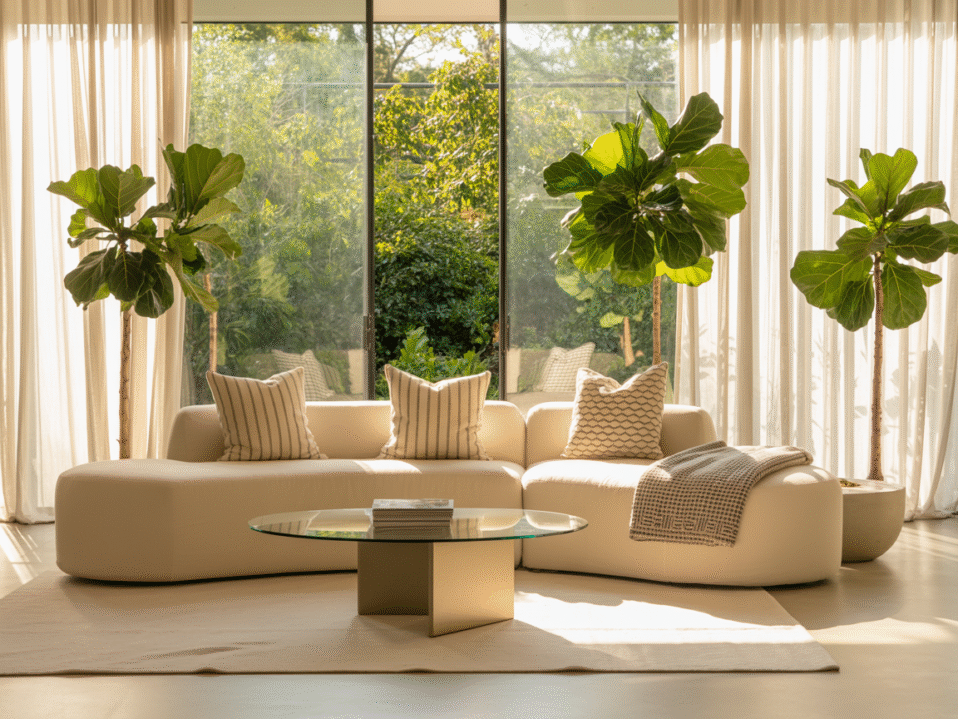
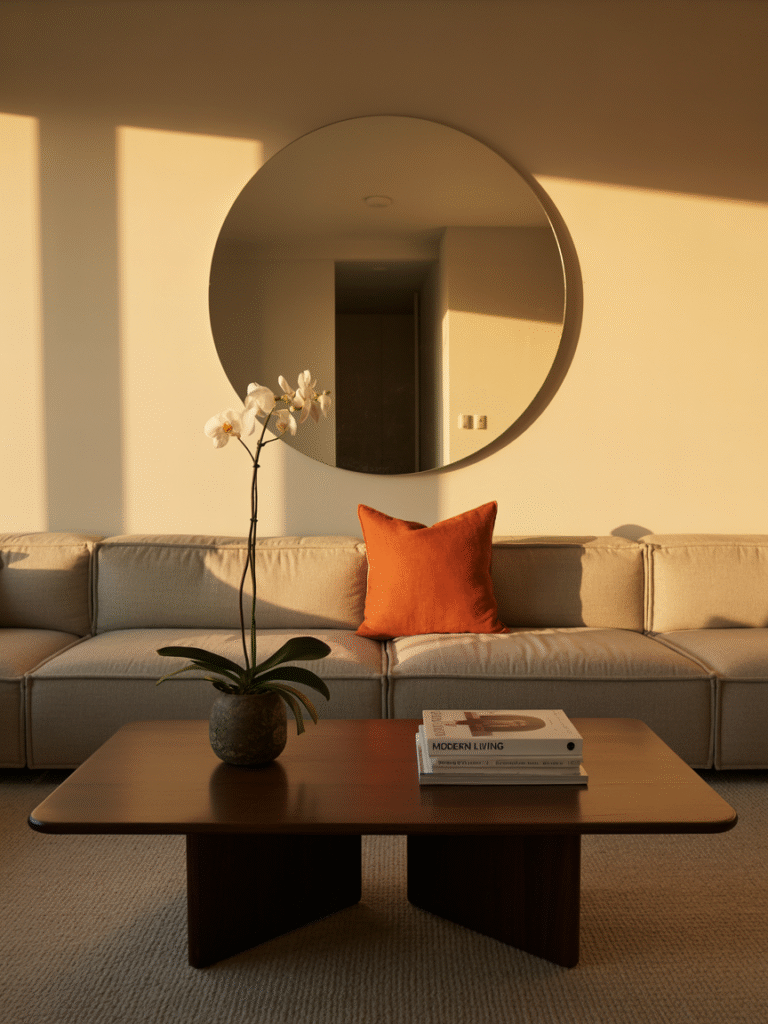


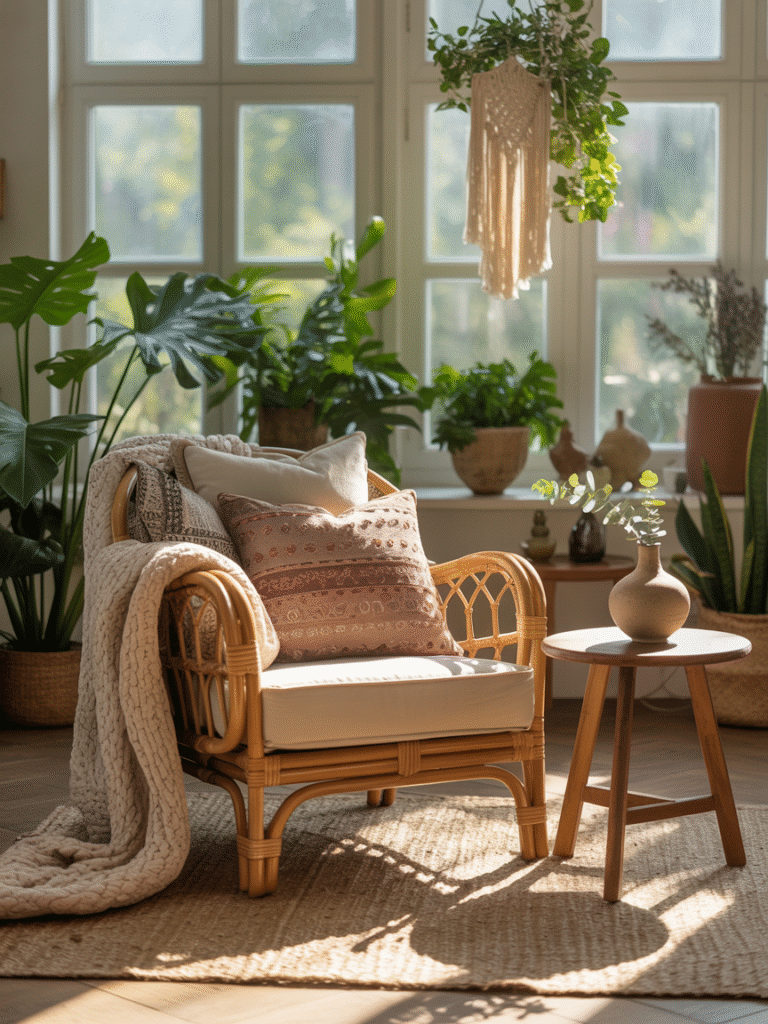

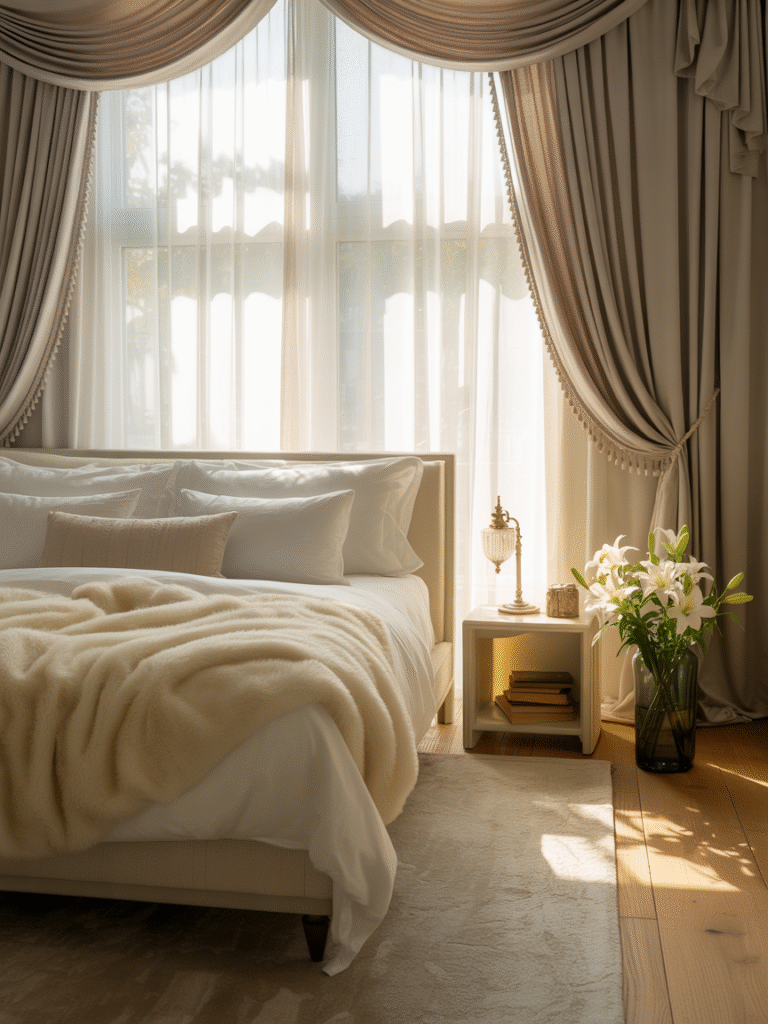
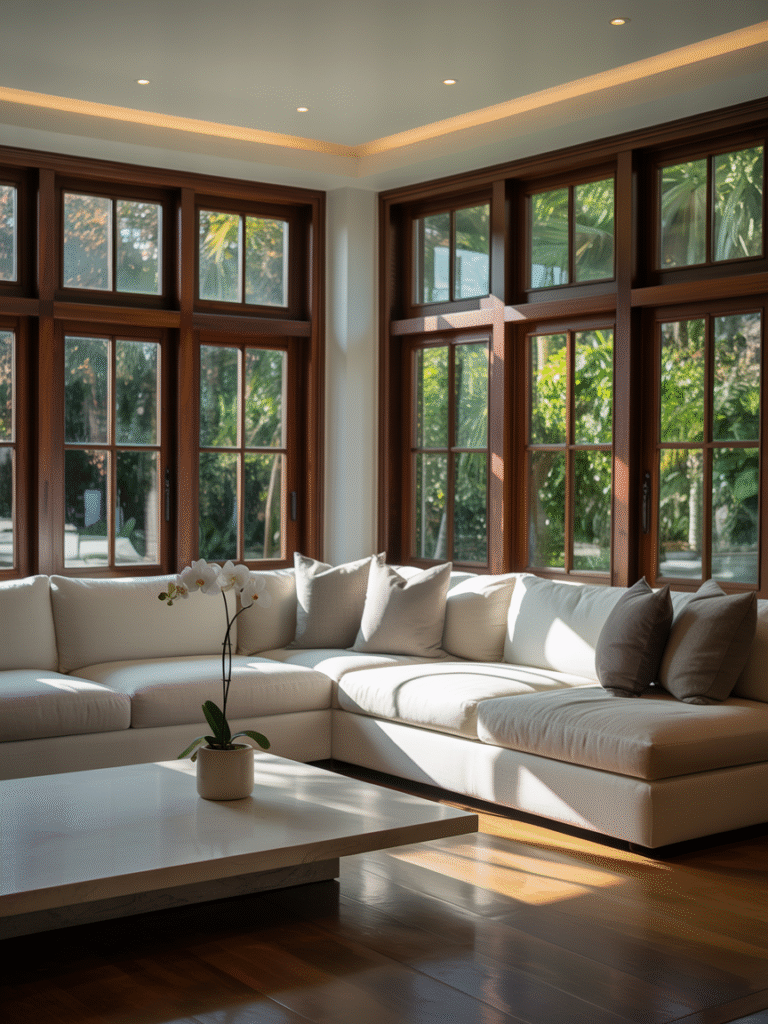
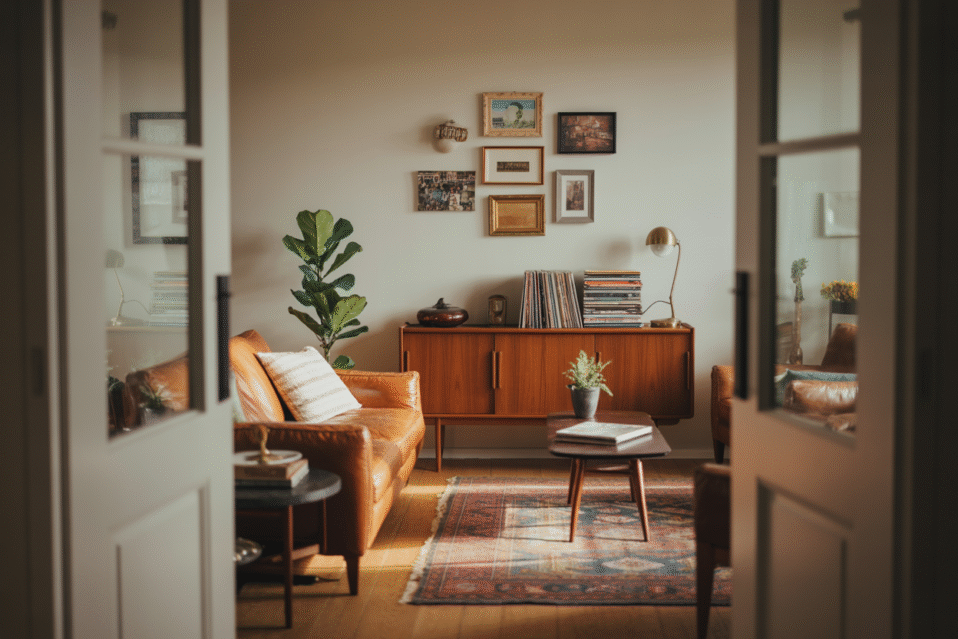




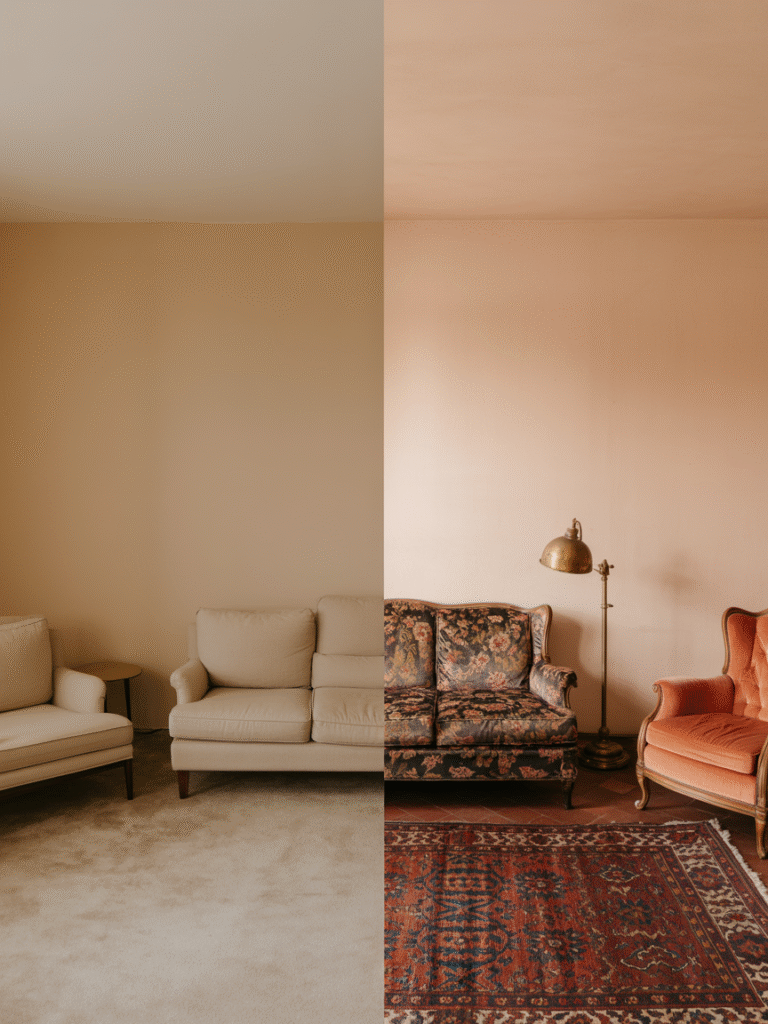
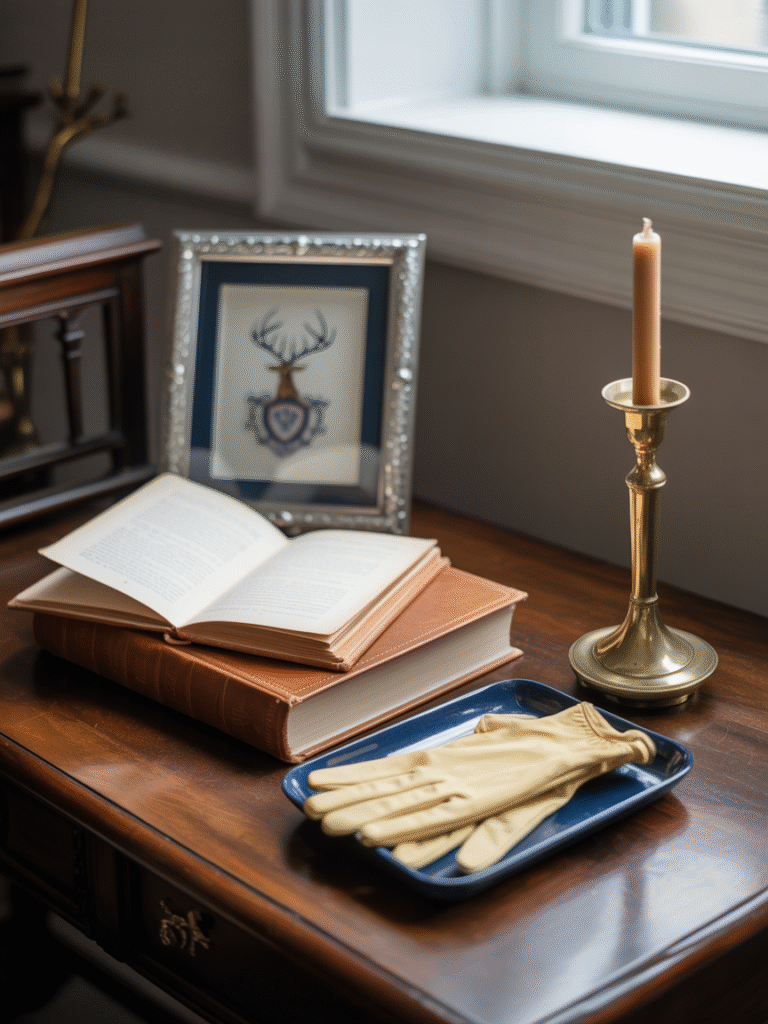

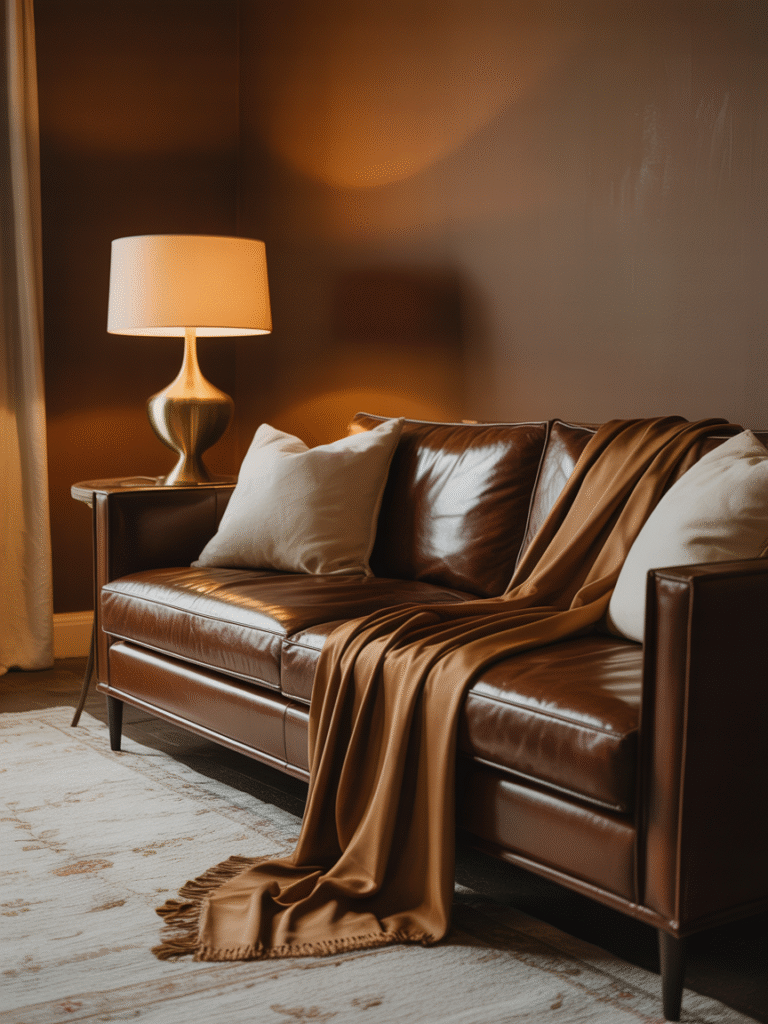
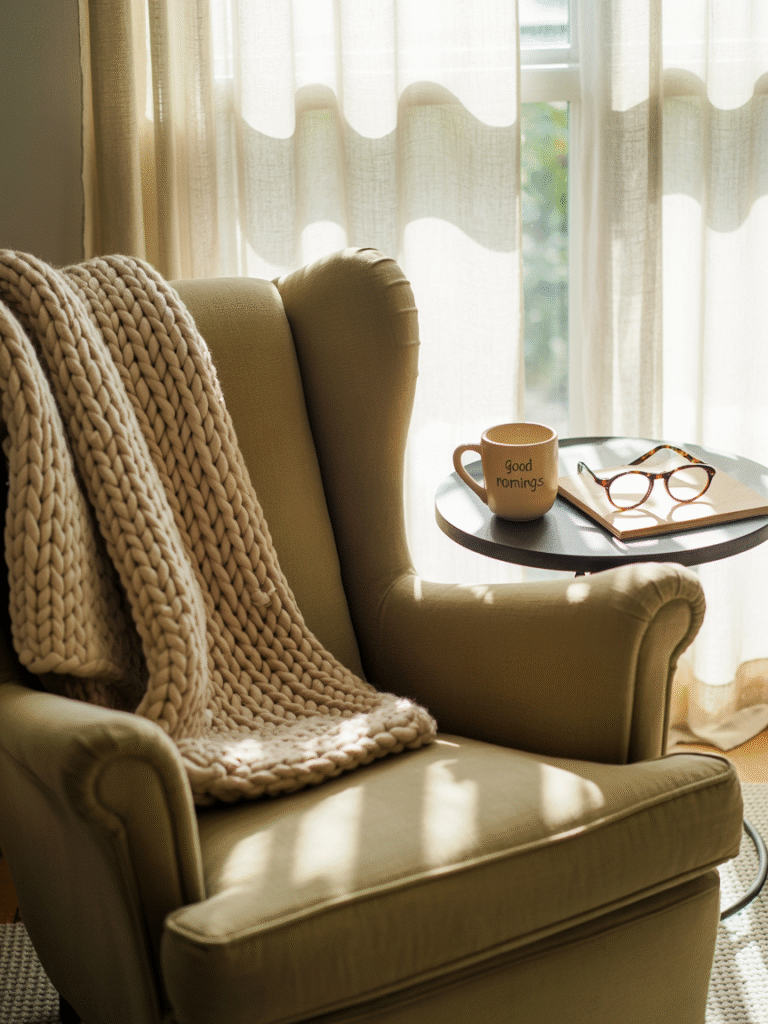
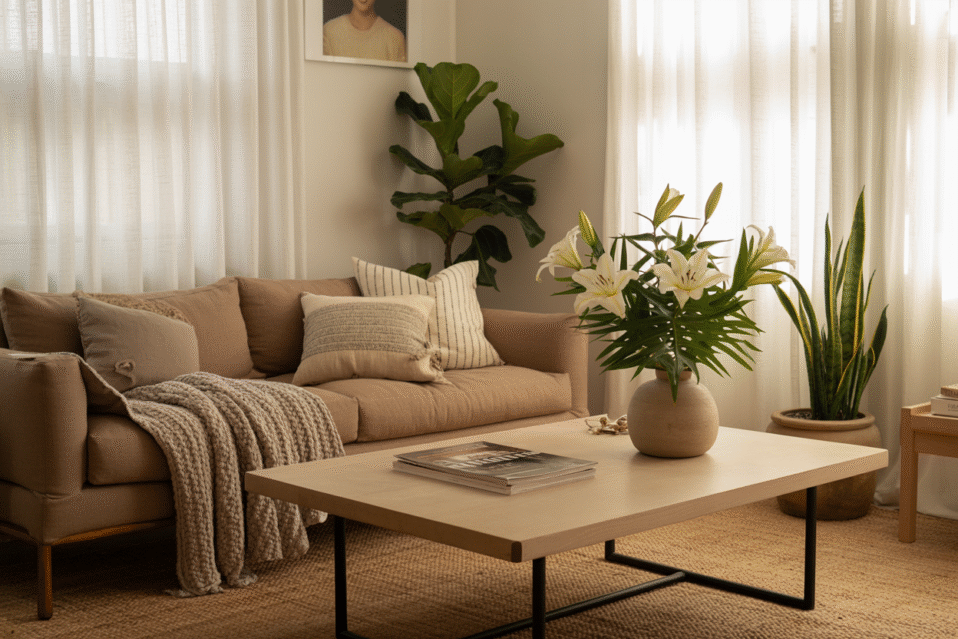
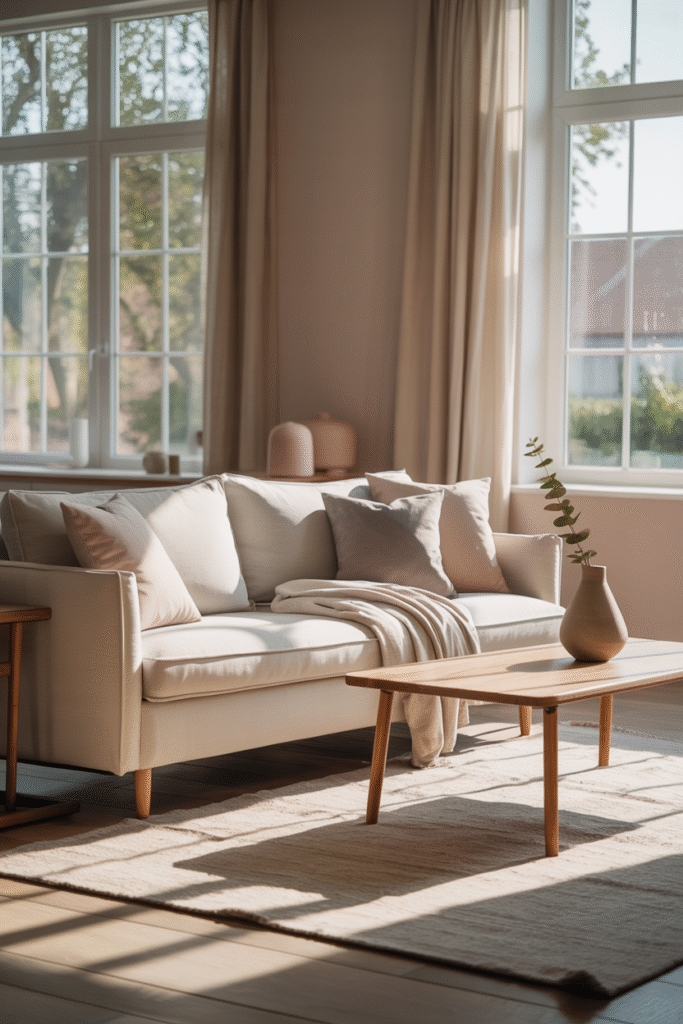
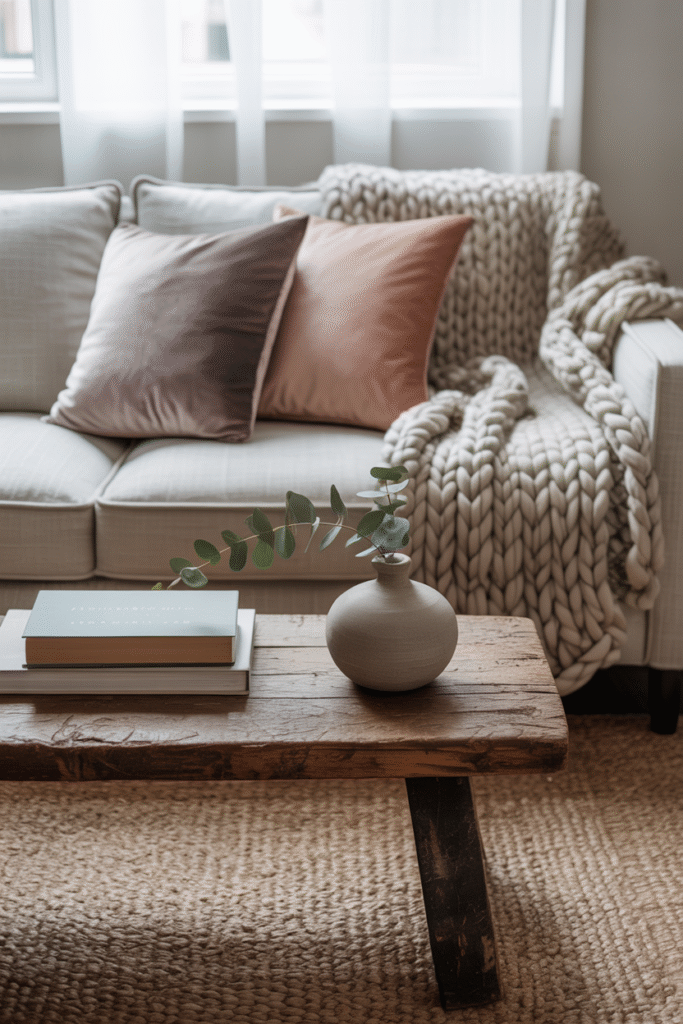
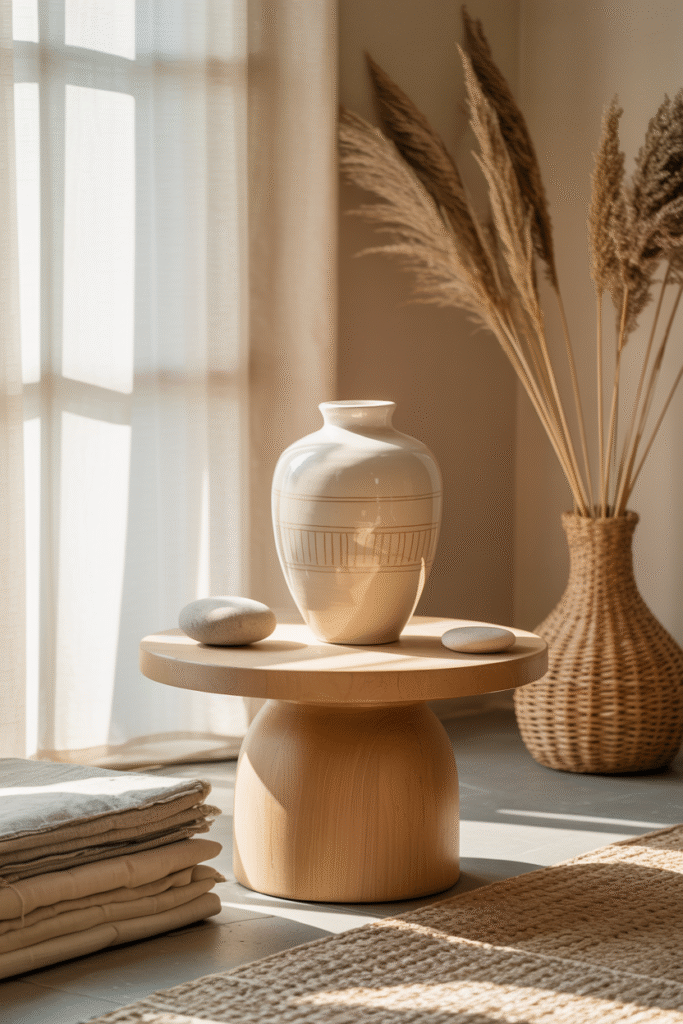

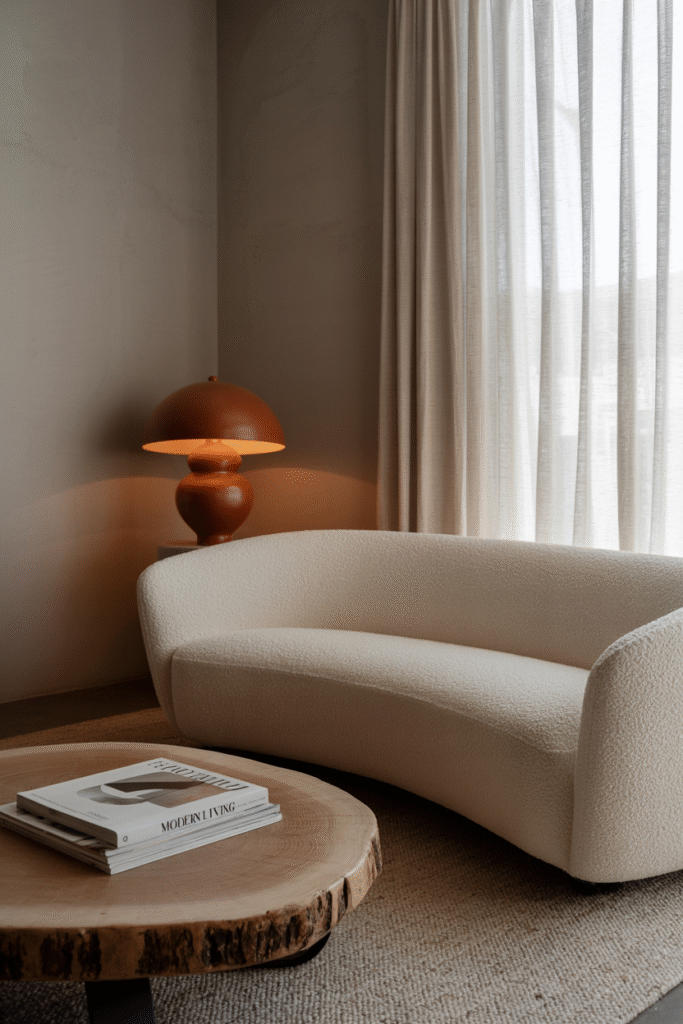
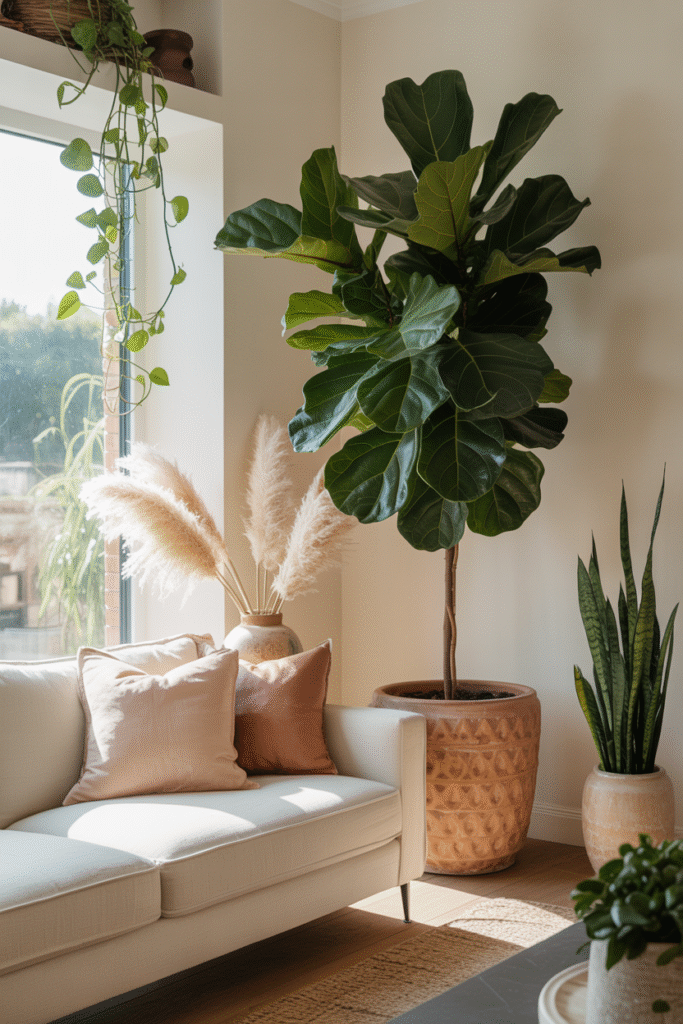
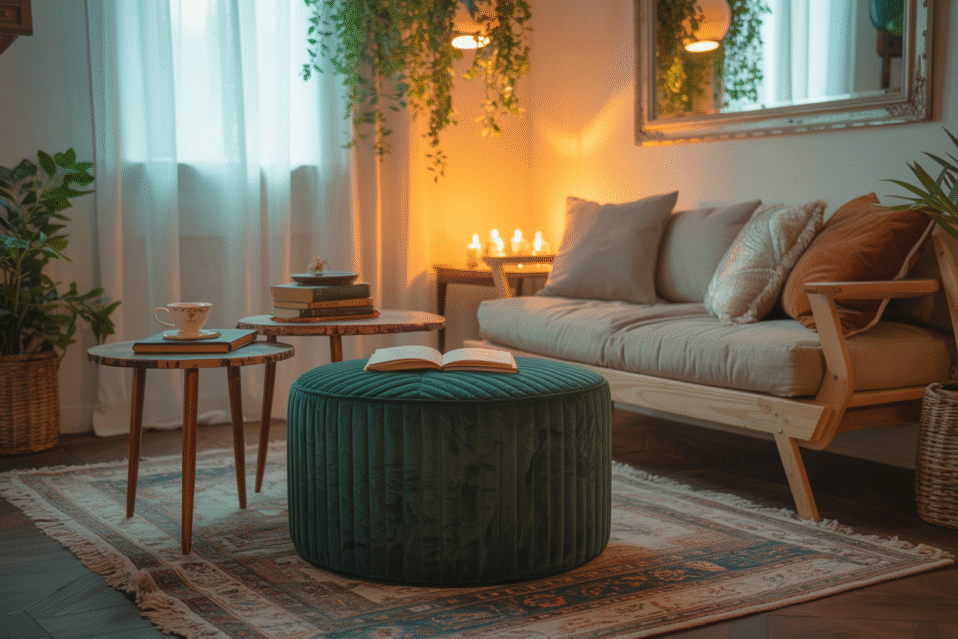


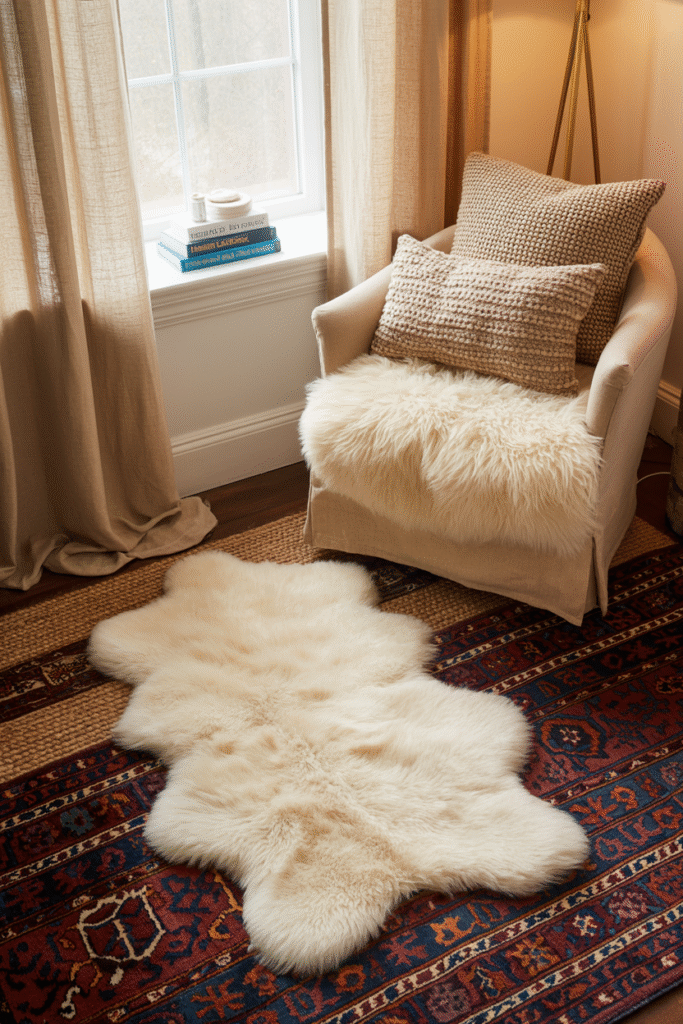
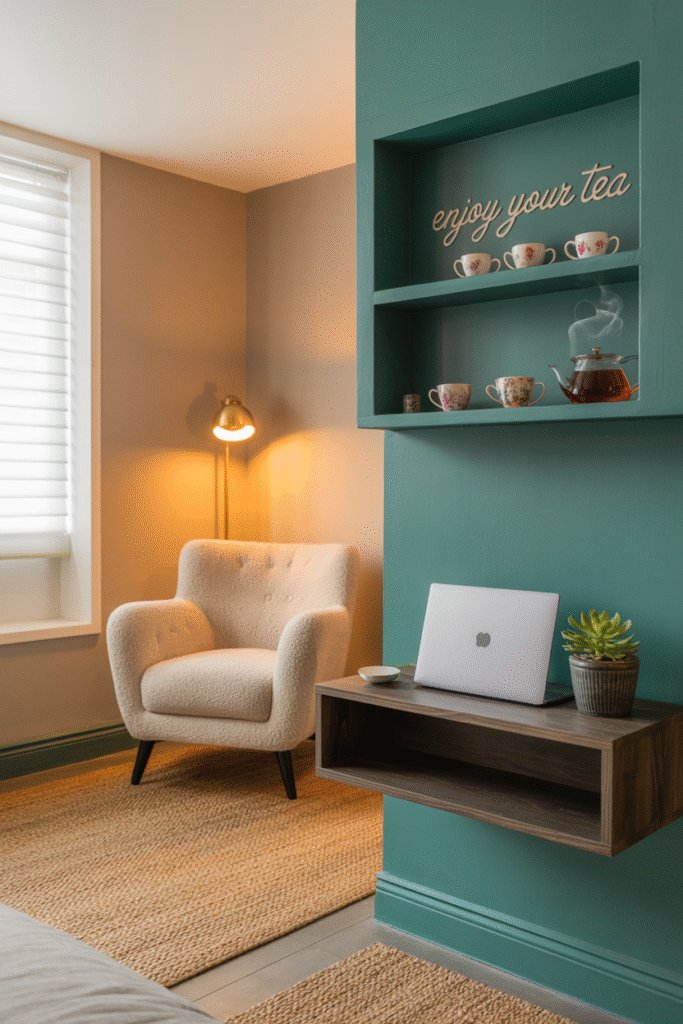

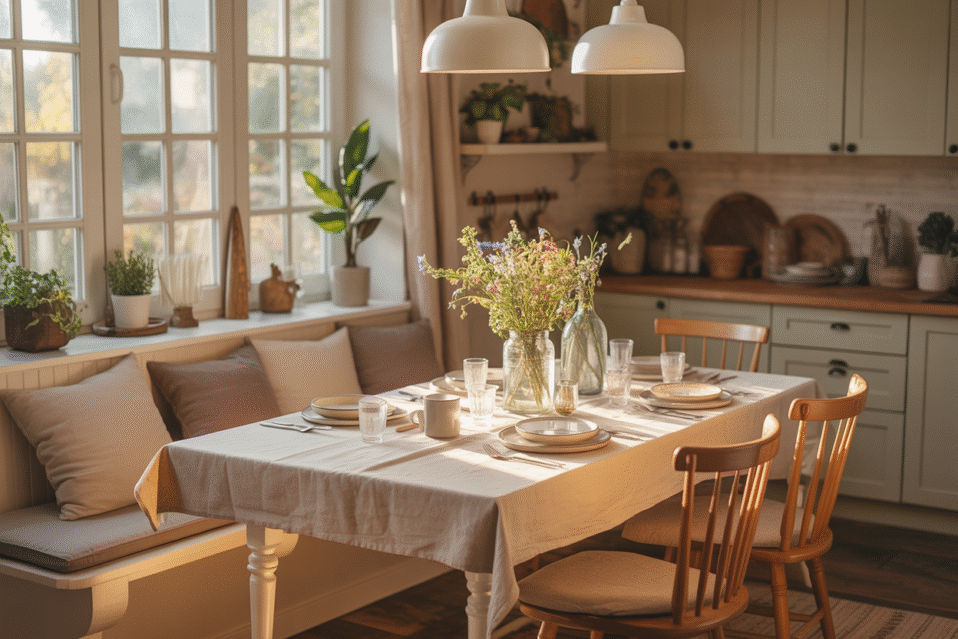
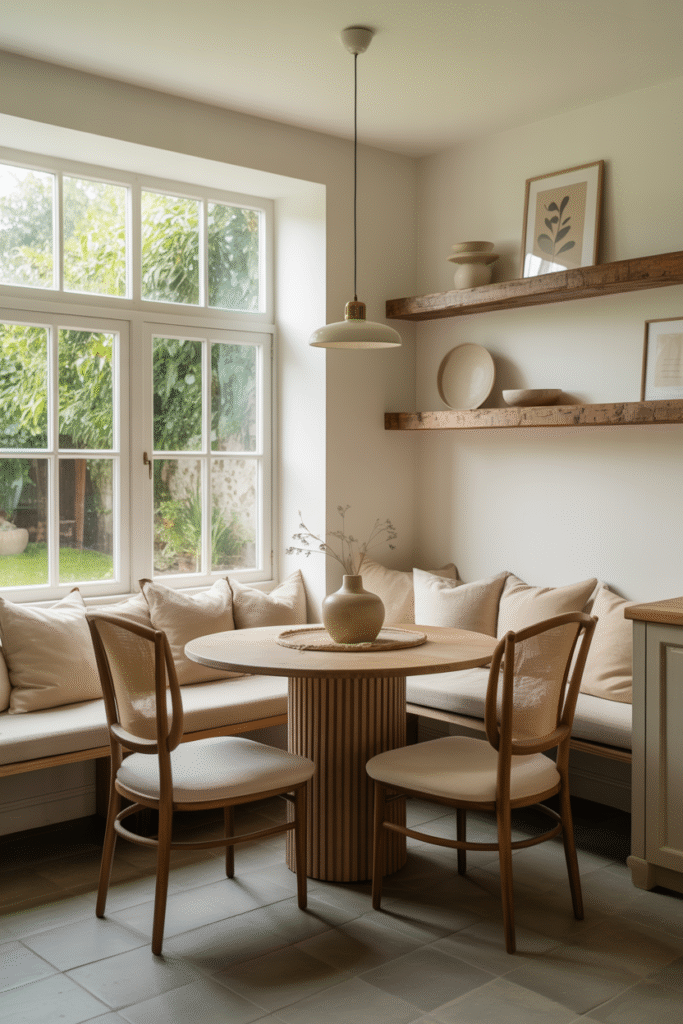
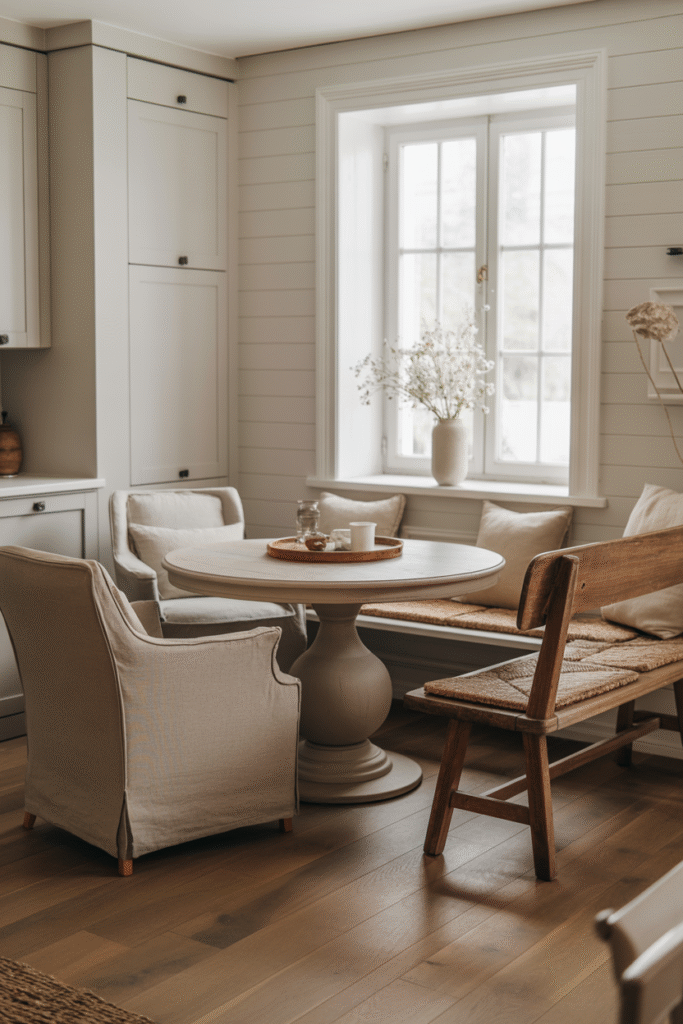
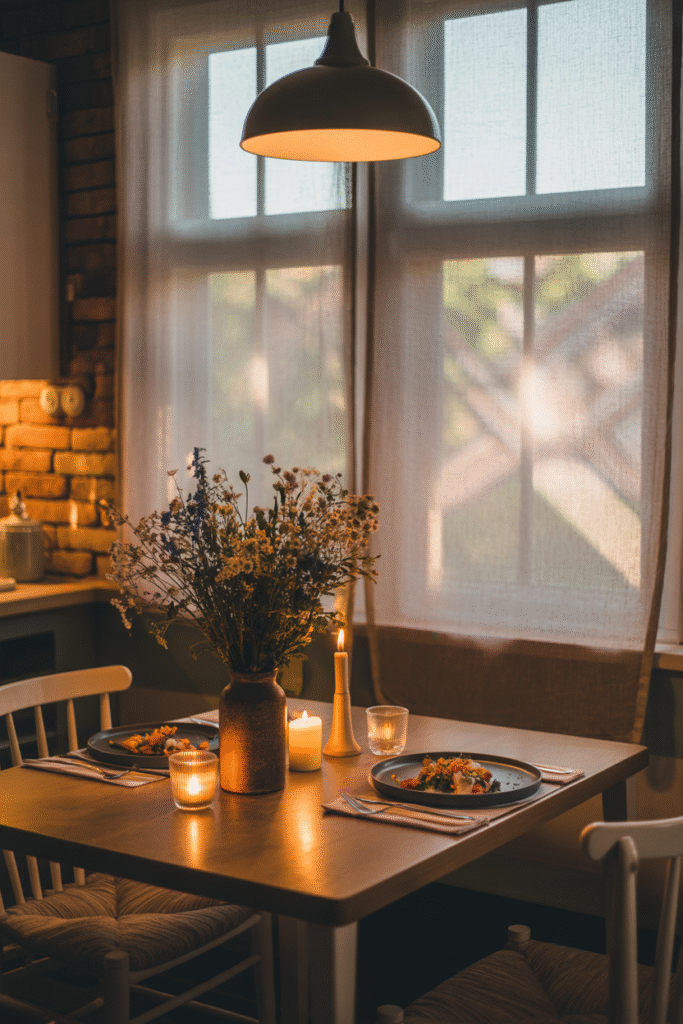
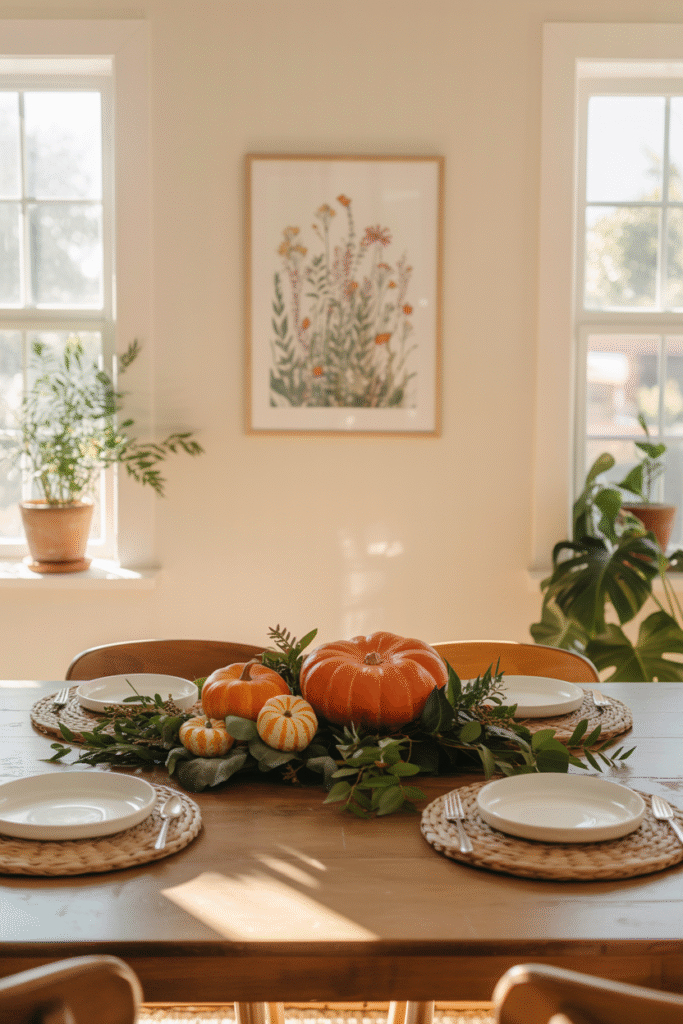
Recent Comments